And the journey to get there!
Part 2 of the 3 Part Series
My grateful thanks to my travel companion and editor Shoba Nayar who I want to acknowledge for her careful eye and amazing suggestions to help bring my writing to print!
Remember this photo from the last story? …. towards Yamunotri!
Yamunotri Pilgrimage Day
On a chilly Himalayan mountain morning, with the sun slowly rising in the east, we prepared for our pilgrimage day. With breakfast under our belt, warm clothes for the journey, and anticipation rising, we set off towards Janki Chatti passing other small towns that are also called ‘Chatti’ due to being places where pilgrims can rest on their journey to the sacred temples nestled high in the Himalayan mountains. In times past, pilgrims walked to these holy places, taking many months or years to complete their Char Dham journey. Today, with motorable roads and modern hotels, the journey for pilgrims, like us, is much shorter and more comfortable. After a 90 minute drive, we arrived at Janki Chatti, the end of the motorable road.
Janki Chatti marks the beginning of the trek to Yamunotri Temple, a sacred shrine of Uttarakhand’s Char Dham Yatra. It is nestled into the Yamuna Valley, divided by the river of the same name, and contains natural hot springs believed to contain therapeutic healing waters. The hiking trail goes through forests and splendid scenery, and is surrounded by oak, pine, and deodar forests, along with rhododendrons. This trek is one of the most beautiful, as every turn and corner provides a new natural beauty. The journey to Yamunotri is simply breathtaking with high snow-covered peaks all around, glaciers, streams and waterfalls, vibrant green foliage, and pristine air.
Don’t forget to click on the photos to see them in full size!
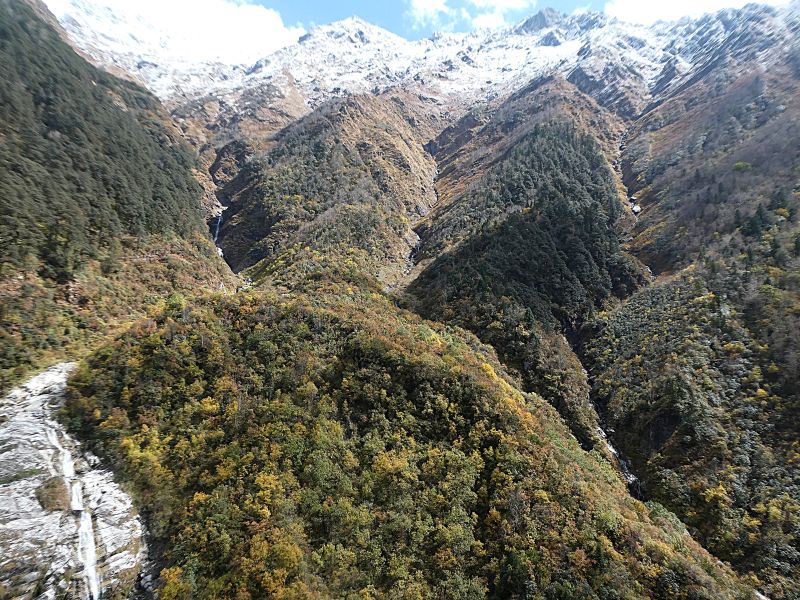

The snow capped mountains and the waterfall path above Yamunotri with the trail along the mountain
I came to this valley in 2003 on my very first trip to India and the Himalayas. I remember from that time being asked to consider the inner journey we were taking and to maintain silence as much as we could. Even then, being Westerners in this remote region, we were considered somewhat of an enigma and it was impossible to ignore the other pilgrims with bright shining curious eyes as they wished to connect and engage in conversation, even if our languages were different. It was fun connecting with the young children who just wanted to walk along holding your hand. Twenty-one years later, and 21 years older, I questioned, for various reasons, my ability to walk at altitude the 6ks to the temple and then 6ks back. Thus, Alice and I chose to hire horses, bred for carrying pilgrims up the mountain path. Oh, how I wished I could have walked this pilgrim trail but I also wanted to complete this journey!

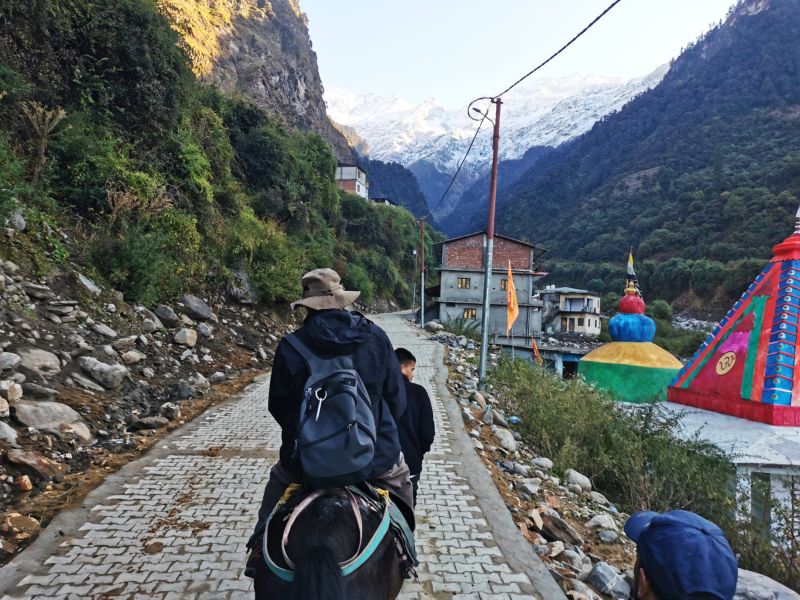
Beginning the journey from Janki Chatti on our horses Rani and Rajah
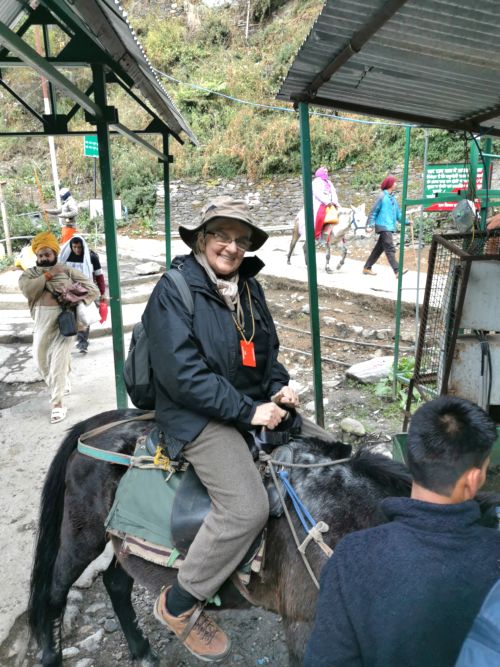

Alice and Rani at the water trough on the trail to Yamunotri and Teresa on Rajah on the way back from the temple complex
Goddess Yamuna
Yamunotri temple, dedicated to the Goddess Yamuna, is one of the 4 sacred pilgrimage sites that includes Gangotri, Kedarnath, and Badrinath temples and makes up the Char Dham Yatra. Yamuna is considered the daughter of the Sun God Surya, and the sister of Yama, the God of Death. She is revered as a symbol of purity and is believed to cleanse the souls of those who bathe in her waters. Yamunotri temple is situated at an altitude of 3,293m (10,807ft) and is considered the source of the Yamuna river. In its background is a huge waterfall at 4,421m (14,505ft) which comes from the Yamunotri glacier higher up in the mountains at 6,387m (20,955ft). Along with this water coming from above, two natural hot water springs arise just behind the temple – Surya Kund and Gauri Kund. The Yamuna river, along with the Ganges, are two of the most important rivers in Northern India.
Don’t forget to click on the photos to see them in full size!
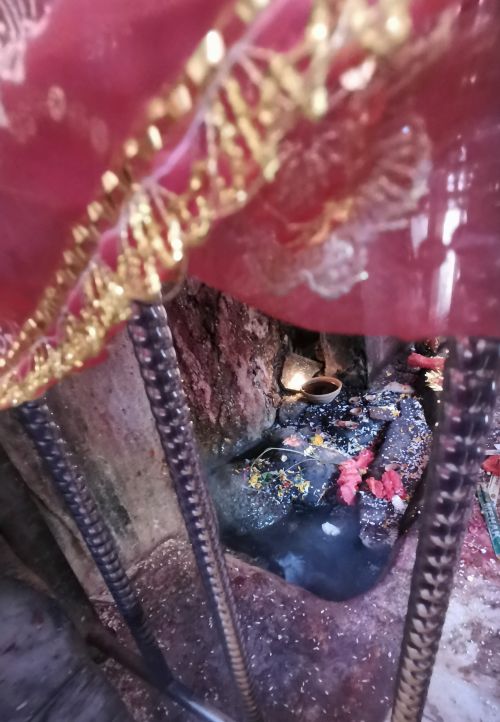
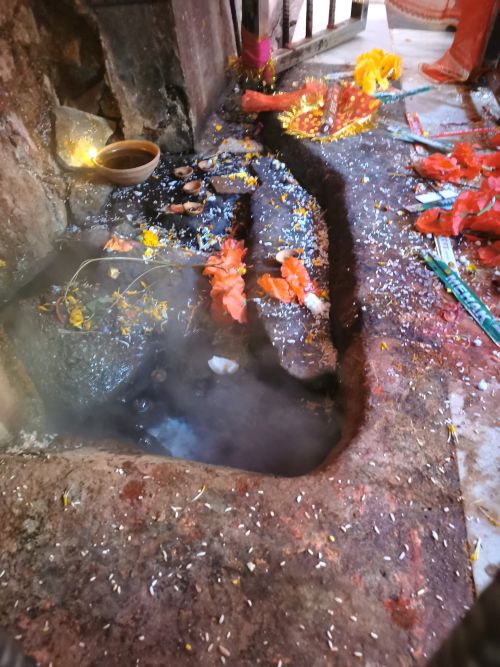

Surya Kund Yamunotri – the boiling water that bubbles up from deep in mother earth
The history of the Yamunotri Temple complex
The original temple was built of wood in 1839 by the King of Tehri, Sudarshan Shah. Erected on the site of an existing small shrine, it was rebuilt in stone in 1871 only to be subsequently demolished due to a massive earthquake. The current temple was erected by the Rani of Jaipur in the 19th century. The stunning diety, Yamuna, enshrined in the temple, is made of black marble. Before the temple was built she was enshrined in a cave. In early Hindu texts, she was referred to as Yumi and Kalindi. Outside the temple is a ‘black rock’ known as Divya Shila, and pilgrims visit the rock before going towards the main temple housing the deity with hope in their hearts that their prayers and offerings are made with purity and devotion, a symbol of the rock’s sanctity.
The complex is open to pilgrims from May until immediatly after Diwali in October when it closes due to the harsh Himalayan winters. The 6-month winter home for the Goddess Yamuna diety is housed in Sameshwar temple in Kharsali Village which is known for its stunning views and sits about 2km from Janki Chatti.
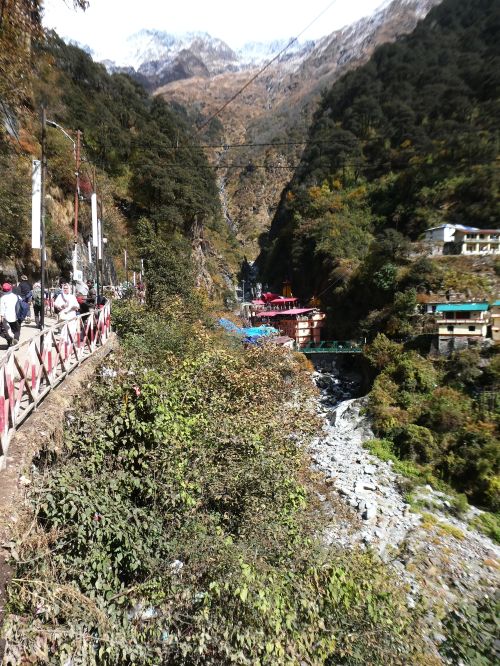
Don’t forget to click on the photos to see them in full size!
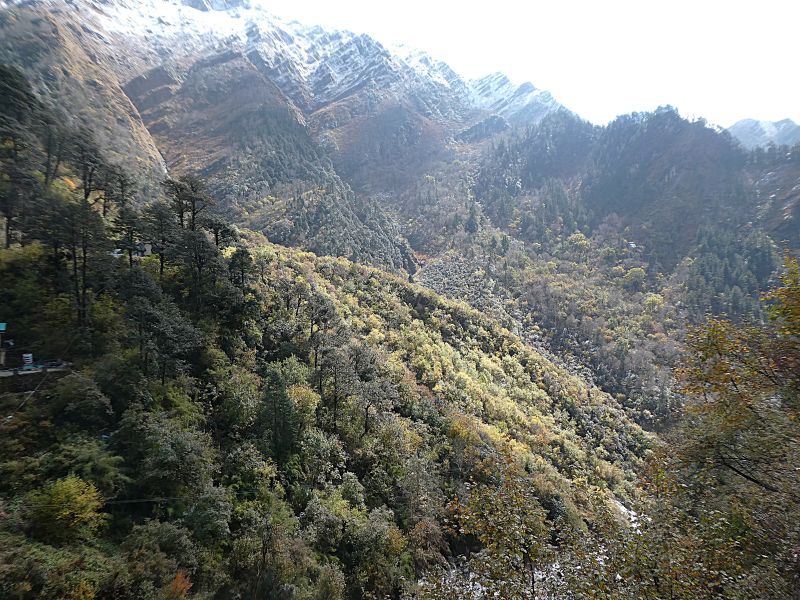
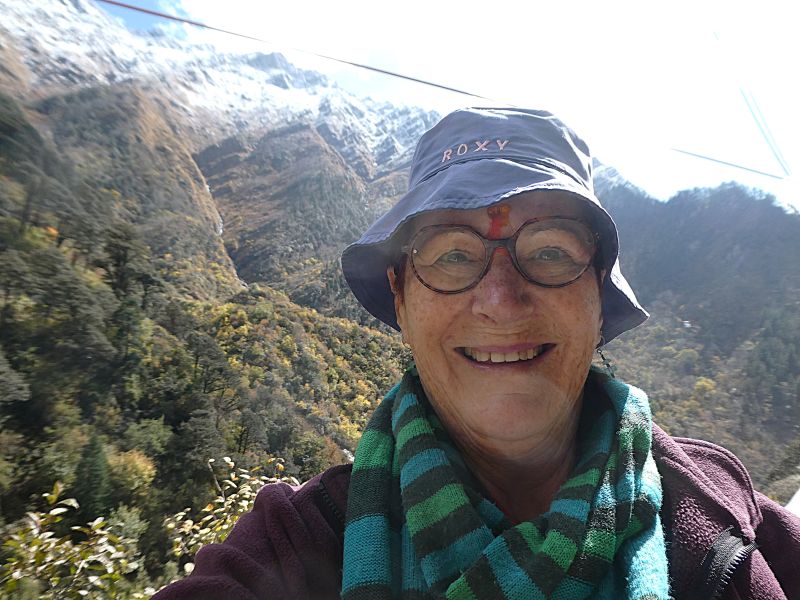
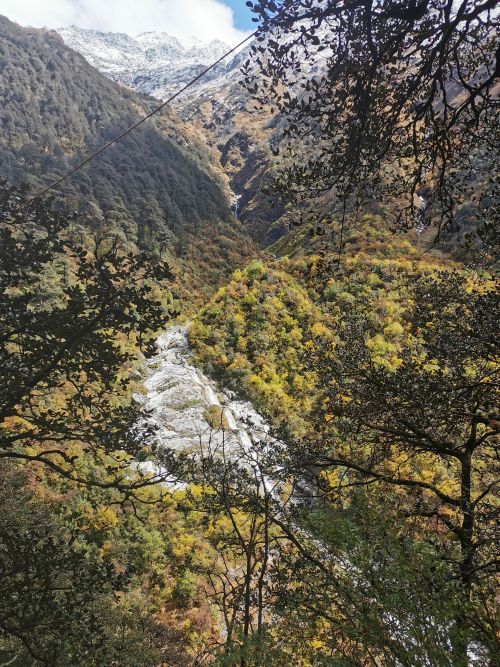
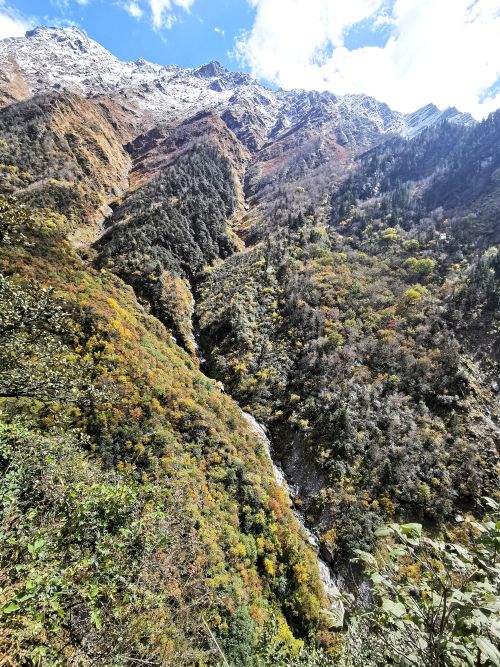
Fresh snow on the mountains around Yamunotri
Arriving at Janki Chatti, a town I remembered from 2003 as being small and quiet, we encountered a busy scene of pilgrims starting the 6km walk up towards the temple, with others setting out on horses or in palanquins. We met our horses and their owners and saddled up! Alice’s horse was called Rani and the owner was Santosh. My horse was called Rajah and its owner was Lakshmi Narayan. On our horses we were soon underway, with Shoba and Kartik striding up the paved path.
It was estimated it would take about 2-hours to ascend and arrive at the temple complex. The trek involves steep ascents and descents, crossing bridges, and walking on rocky terrain. There were a lot of people on the track but as it was getting close to the end of the ‘season’ it was not so crowded. As I wound my way up the pilgrim trail I had ‘flashbacks’ to 2003 and although there were changes to the route, there were also a lot of familiar sights, sounds, and smells.
We stopped at a tea shop, of which there are many along the route, and enjoyed some hot chai which was very welcome in the cold mountain air. The sun was warm but we were in a steep-sided valley so were frequently in the shade. At times the track became steep and I was pleased to be on the horse. Just on the 2-hour mark, we arrived at the area where the horses stop for a rest. Alice and I dismounted and chatted with Santosh and Lakshmi Narayan, and took photos with our horsemen and horses, before walking the last few hundred meters to the temple.
Don’t forget to click on the photos to see them in full size!
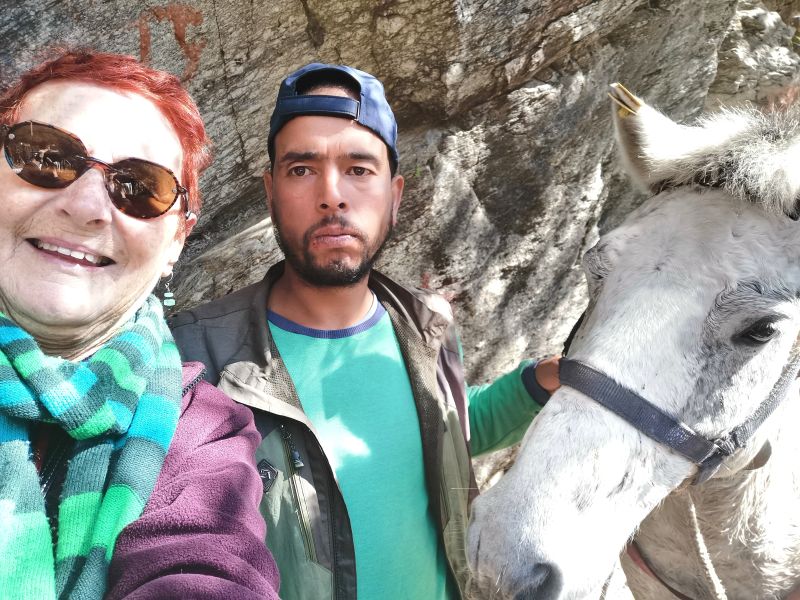
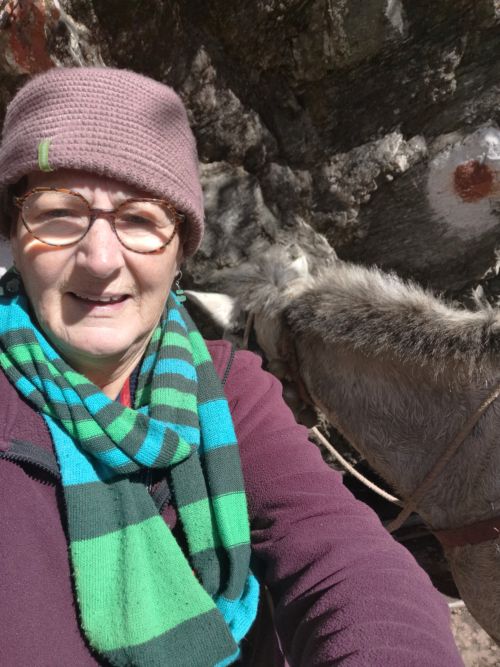

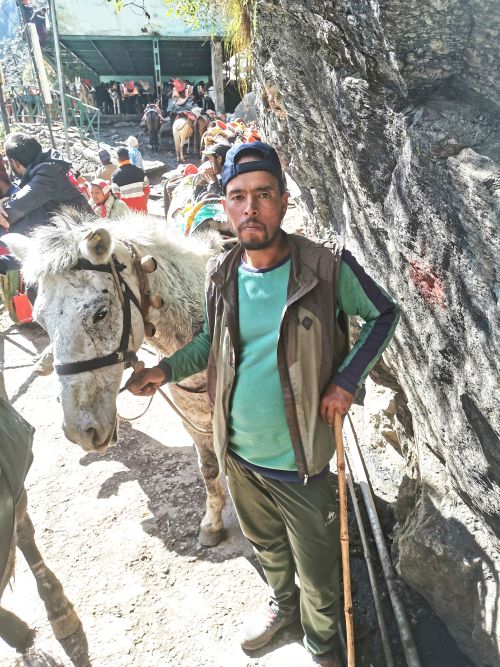
Lakshmi Narayan my horseman at the horse compound near Yamunotri
We met up with Shoba and Kartik and went towards the Divya Shila and then to the temple to receive the blessing of Goddess Yamuna. The number of people made it difficult to spend much time in Her presence and the energy before being jostled out of position by another eager pilgrim. However, it was a blessing just to be there and feel the powerful energy.
We took time to visit the Surya Kund and see the boiling water coming up from the depths of the earth under the Himalayas. I visited some small temples in the complex, talked to a man cooking in a small room, and found a small Shiva Lingham in a crypt beside one of these small temples. The special feeling of being in one of these sacred pilgrimage temple complexes is something that cannot be put into words but a feeling that is deep and nourishing.
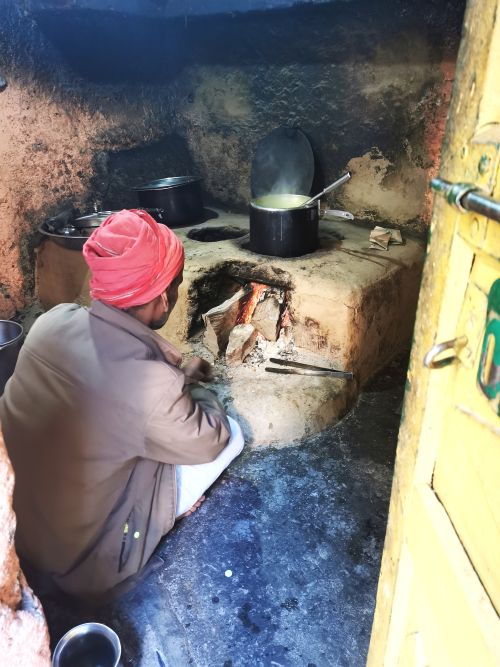
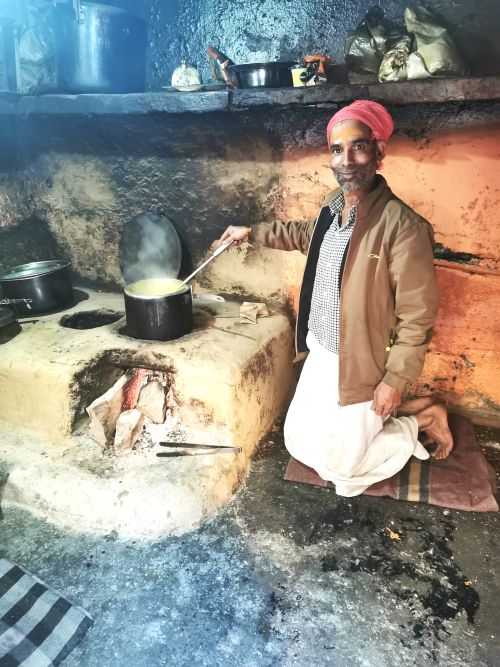
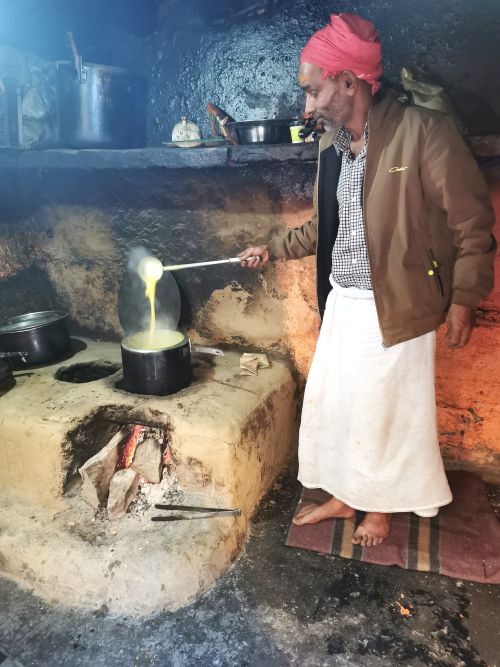
Don’t forget to click on the photos to see them in full size!
Beside a small temple at Yamunotri I came upon a man cooking curry
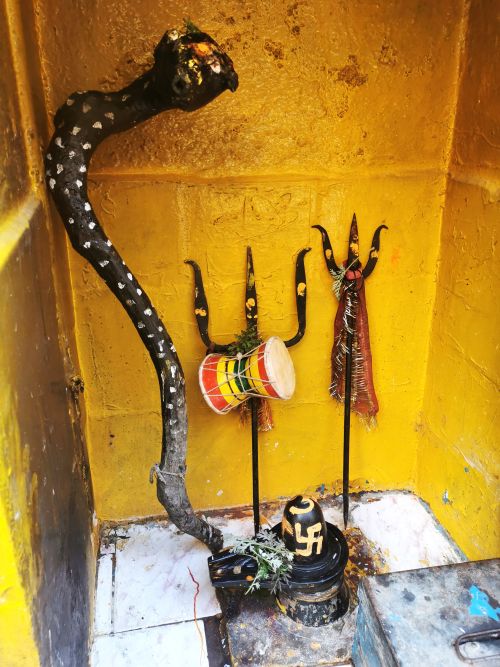
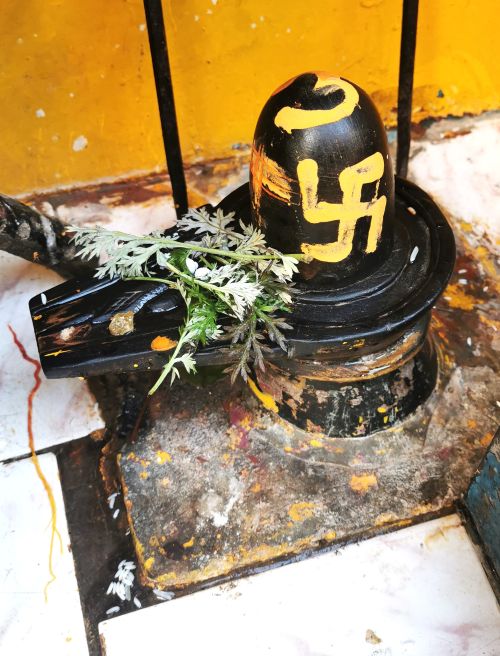
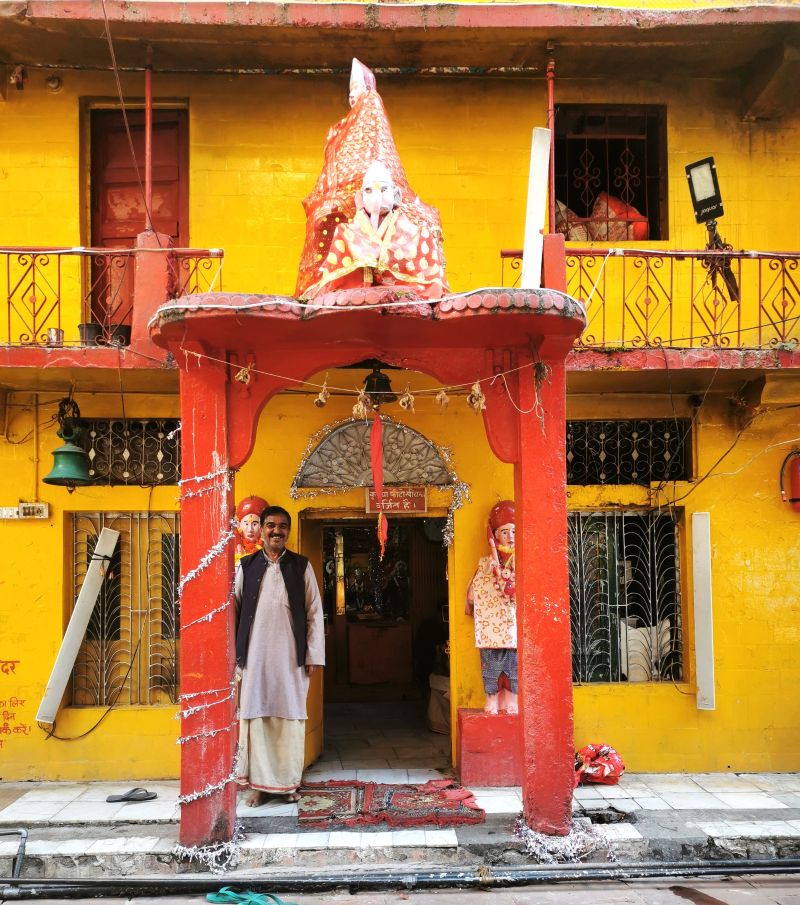
The Shiva Lingam and a fellow pilgrim asked to pose in front of a small side temple
Soon it was time to leave and we once again met up with Rani and Rajah. First, we stopped for chai and pakoras in a trackside cafe by way of a small celebratory meal.
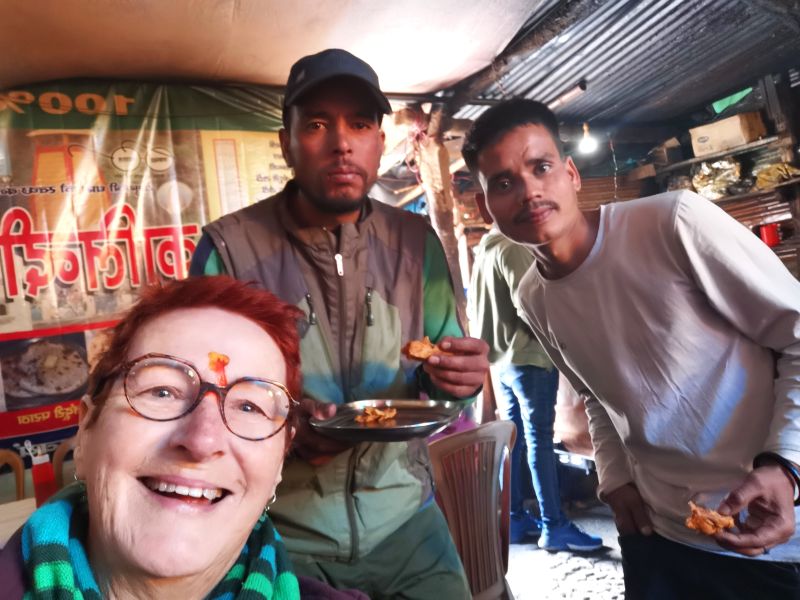
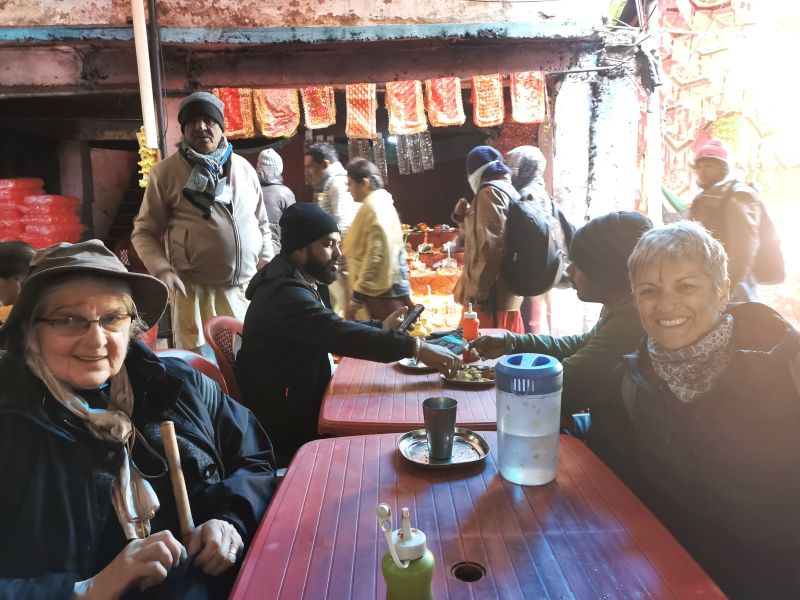
- Teresa, Lakshmi Narayan and Santosh 2. Alice on the left & Shoba on the right at the shop for tea and pakoras
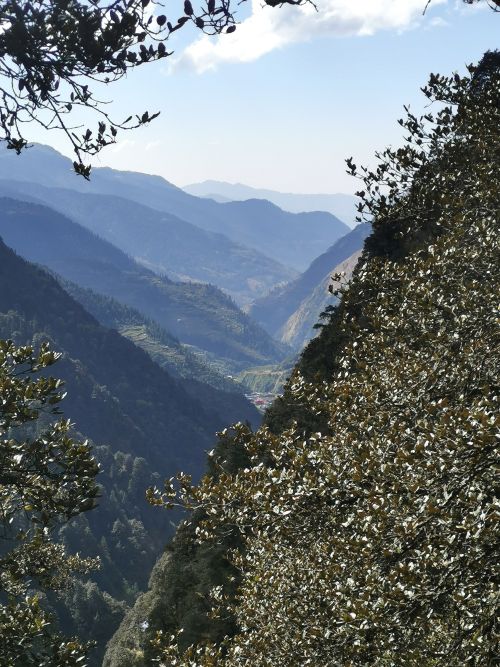
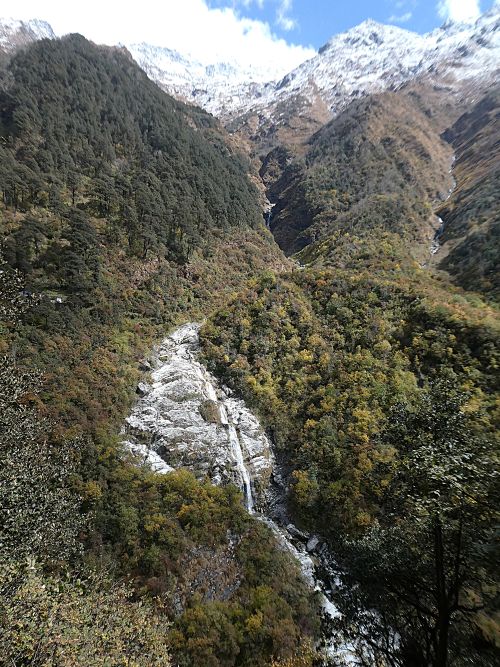

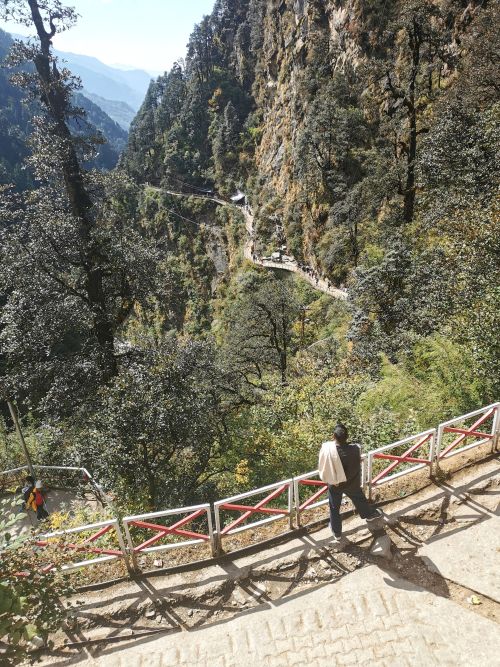
A series of valleys seen from way above Janki Chatti and the trail back to the village
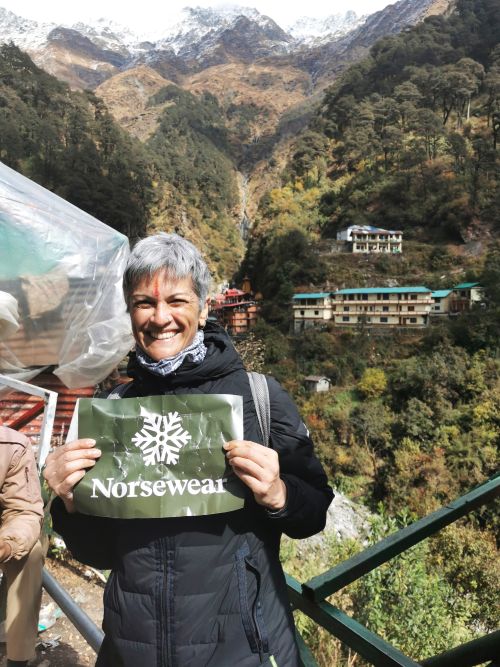
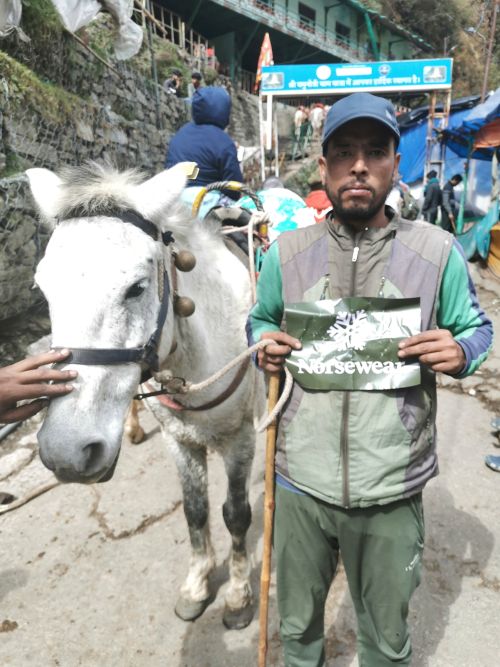
Shoba (left) Lakshmi Narayan and Rajah (right) with the Norswear competition sign at Yamunotri
Later, as we set off towards Janki Chatti, I started to walk; however, at about three-quarters of the way down the mountain my legs got shaky and so I again made use of Rajah! Alice, Shoba, Kartik, and our driver, Deepak, were waiting for me at a tea stall where we had a drink before returning to the hotel in Syana Chatti.
We celebrated our day with a good chat over dinner and went to bed early. The next day was another long drive towards Uttarkashi and on towards Gangotri – the home of the temple by the same name – the second Char Dham temple on our journey.
Leaving the hotel in Syana Chatti & a small temple along the way!
Towards Gangotri
After a nice breakfast, we set off back down the valley towards Barkot. The road was narrow but Deepak negotiated the twists and turns with great care and confidence.
From Barkot we turned towards the southeast and started to climb high through the forest, twisting and turning as we followed the contour of the hills.
It was incredibly beautiful and fresh up in the hills, passing spread out villages and farms up to 2,200m (7,218ft). We began our descent, coming out at the Silkyara Bend where, in November 2023, 41 tunnel workers were trapped for 17 days before being rescued. Later, having travelled about 60km, we arrived in Dharasu at an elevation of 1,339m (4,393ft).
We turned up towards the north again and drove towards Uttarkashi where we stopped for lunch before visiting the Vishwanath Temple, dedicated to Lord Shiva. This temple is a prominent landmark in the region and holds religious and spiritual significance. People come from many parts of the world to experience the energy of this temple’s blessing.
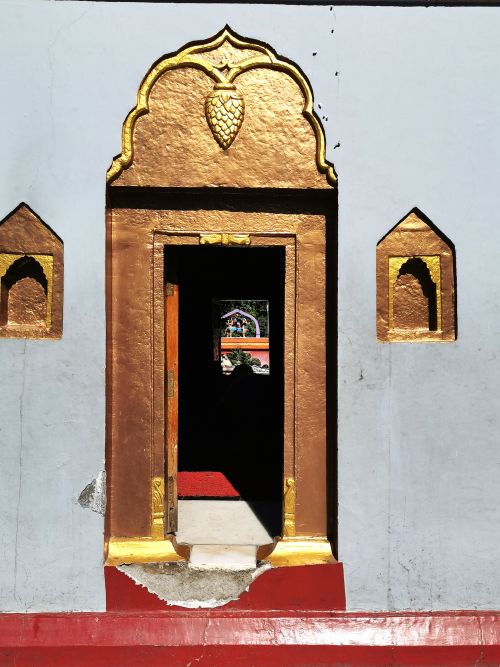
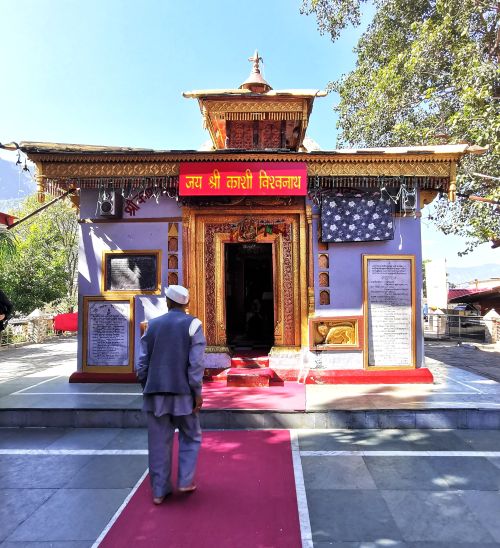
Temples at Vishwanath Temple complex Uttarkashi
Don’t forget to click on the photos to see them in full size!
According to the National Informatics Centre, Ministry of Electronics and Information Technology, ‘the Viswanath Temple is the most important and ancient holy shrine in this region. Of the many temples in Uttarkashi, the temple of Lord Vishwanath is unrivalled in importance. Shiva, the presiding deity of this temple, is worshipped all day here. Every evening, visitors are greeted by the sound of bells, and the chanting of mantras by pundits at the puja. Within the courtyard of the Vishwanath temple, and to the front of it, is the Shakti Temple, dedicated to the goddess of strength. The massive brass trident projecting from this temple bears an inscription describing how the Vishwanath Temple was built. According to it, the temple was built by King Ganeshwar, whose son Guh, a great warrior, built the trident’.


The temple that houses the trident at Viswanath Temple complex Uttarkashi
Situated on the Sacred Bhagirathi River, Uttarkashi sits at an altitude of 1,158m (3,800ft) with what has been described as a ‘picture-postcard-like appeal’. Rich in cultural heritage, this ancient land is surrounded by high mountains and has been the home of many sages and saints who have meditated here over many millennia.
The prestigious Nehru Institute of Mountaineering (NIM) is also housed on a hill above Uttarkashi and is considered one of the best mountaineering institutes in India. Kartik has been fortunate enough to have trained here and told us that the place where it is situated is very beautiful with lovely well-kept grounds. However, we were unable to visit as we pressed on towards our destination for the night – Gangotri.
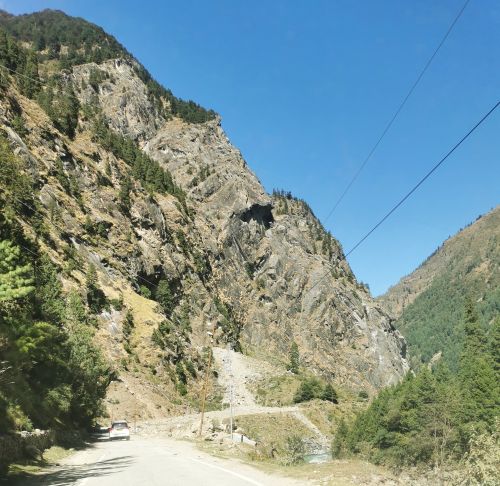
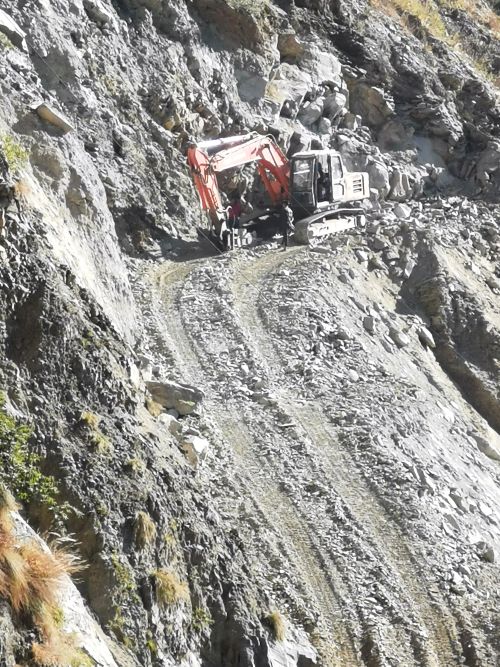
The narrow road to Gangotri with slips and clearing
The Apple regions above the Bhagirathi River

We drove up the valley and started snaking up the narrow twisting road, climbing higher towards the village of Sukki, where we stopped for chai at a roadside stall. Sukki is set among apple orchards high above the Bhagirathi River which runs down from Gangotri.
The owner of the chai stall lived locally, and made and sold jars of apple chutney which we purchased to take home.
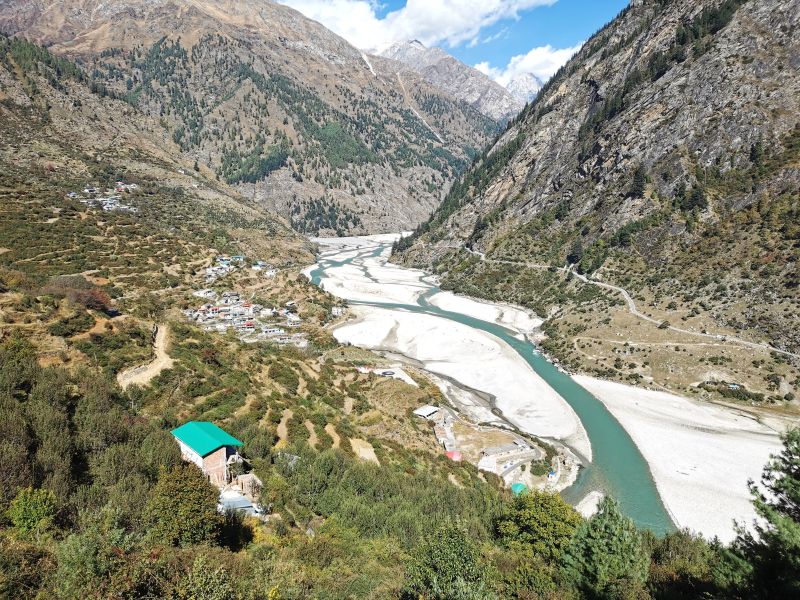
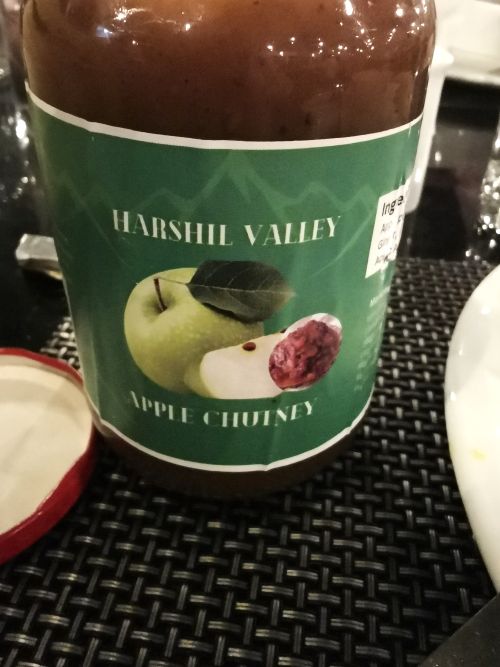
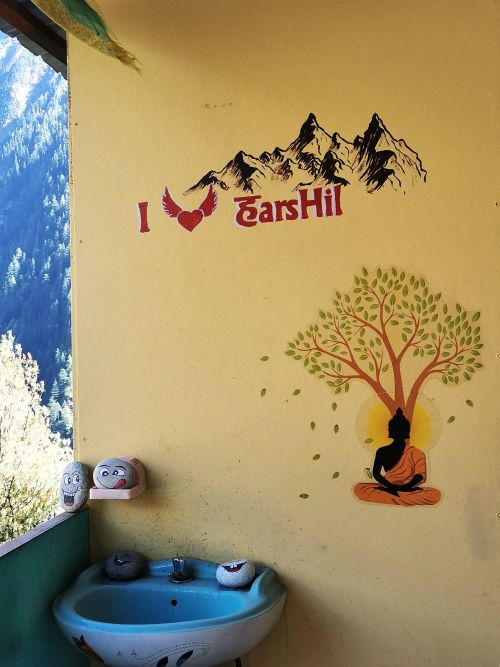
The Bhagirathi River villages & apple orchards, a bottle of the apple chutney & wall art
Don’t forget to click on the photos to see them in full size!
Continuing onwards down to the river, we crossed over and passed many small tracks leading up into the mountains where apple orchards were being harvested. Alongside the roads many small trucks collected the bags, boxes, and plastic buckets of apples headed for the international market.
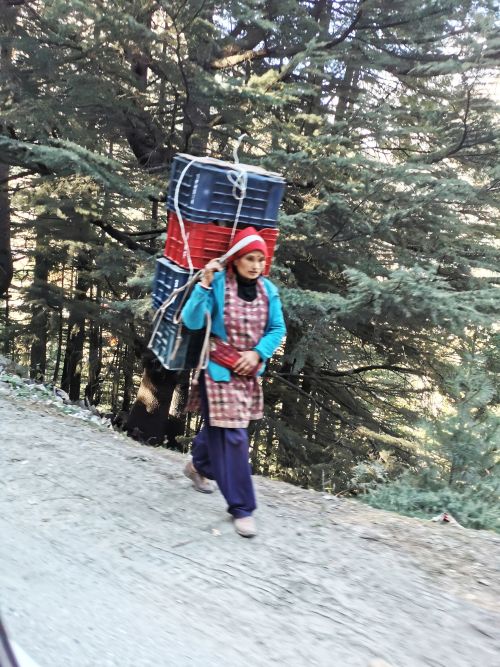
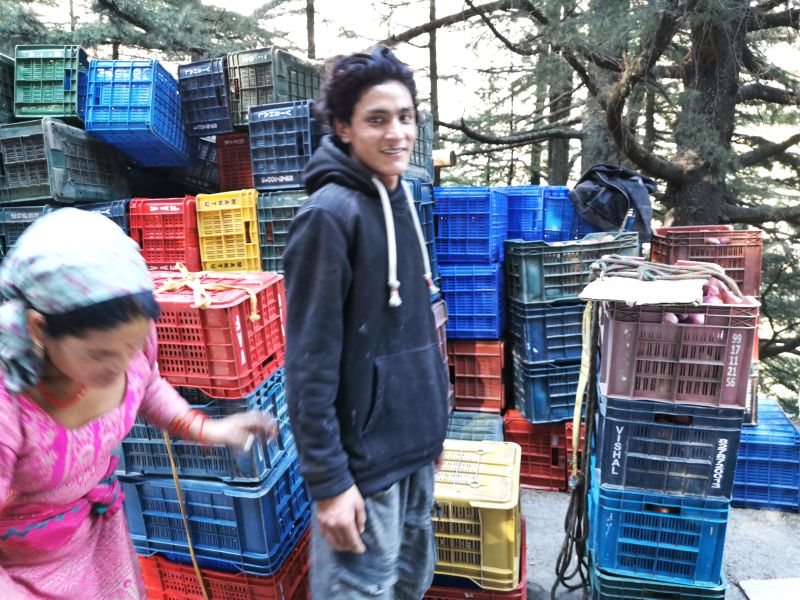
Working on the apple harvest and transportation
Near Harsil I was excited to recognise a small green grassy patch by the river where, in 2003, we camped on my first trip to Gangotri. It is no longer permitted to camp in this riverside area due to the risk of fast-rising rivers and the danger to life. The drive was very pretty through the forest beside the river with the towering white-topped mountains above Gangotri coming into view.
At the Lanka Bridge river crossing, high above the Jadh Ganga, there is a forest check post which marks the entrance to the ‘Gartang Gali’ – an amazing trail that I would have loved to have taken, where, further up the valley, a wooden staircase spanning 500m clings to a vertical ridge at 3,3353mt (11,000ft) above sea level. This track leads to the Nelang Valley and with breathtaking views of the high Himalayan Mountains formed part of the Silk Route when, in the past, there was trading with Tibet.
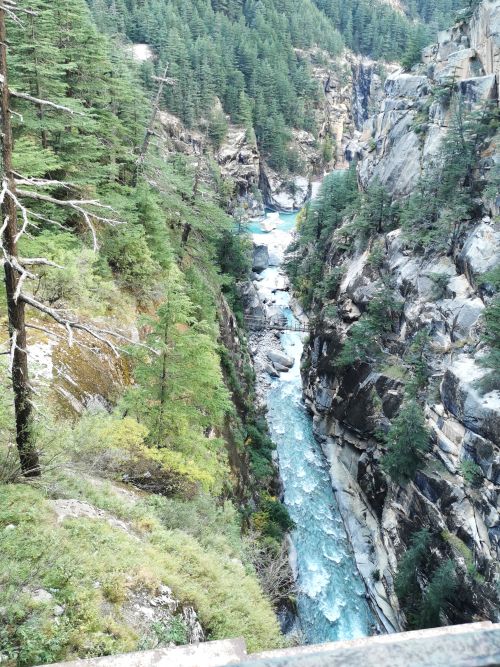
Crossing the Lanka Bridge, we stopped briefly for the views; however, we were ‘hurried on’ by the guards due to the militarily strategic nature of this area. Driving on we arrived in Gangotri. We made our way to our hotel which overlooked the Bhagirathi River.
The river starts further up the valley, in Tapovan, before coming out of the Gaumukh Glacier, a 19km trek up the valley, as the Bhagirathi River. It later becomes the Ganges further down at Devprayag. I had the good fortune to visit here in 2003 and although it is not a difficult trek, it has to be remembered that the Glacier is at an altitude of 4,000m (13,200 ft) and not to be dismissed as easy. I knew I could not do that trek this time and was content with my memories from my previous visit.
Gangotri
Gangotri sits in the Garhwal Himalayan mountains overflowing with massive peaks and glaciers, dense forested hillsides, and deep river ravines. This pilgrimage site is situated at an elevation of 3,100m (10,171ft) above sea level and is steeped in the Hindu legend that the river descended to earth from the heavens above through the release of the mighty waters from the hair of Lord Shiva.
We passed through the long row of shops on the way to the temple and the entrance to the complex was a welcome sight. The sacredness of the 6m (20ft) white granite temple could be felt as we took our place to receive the blessing in front of the deity in this Gangotri Yatra. Dedicated to Goddess Ganga, the temple stands with an air of divine grace where pilgrims can enjoy total immersion in the spiritual ambience of this nature paradise which adds ambience to the rituals, prayers, introspection, inner reflection, and blessing received, by just being there. Goddess Ganga is depicted in many forms as fair-skinned, sometimes holding objects of significance such as a flute, a water pot, a lily or lotus, and prayer beads, wearing a white dress, having 4 arms, and sitting on a crocodile. After our blessing and connection to the Divine, as the deity Goddess Ganga, we sat on the seats nearby in silence and reflection. Receiving blessings at the four sacred and holy temples of the Himalayas that constitute the Yatra is considered part of the sacred journey towards freedom and enlightenment. It was a powerful spiritual experience of many emotions as Shoba completed her Char Dham Yatra.
We made our way down the steep steps towards the river for a ritual blessing from the water of Mother Ganges. On this path are smaller temples, one of which houses a large rock, the Bhagirathi Shila, much loved and worshipped as it is believed to be the place where King Bhagirathi meditated to bring the River Ganges to earth.
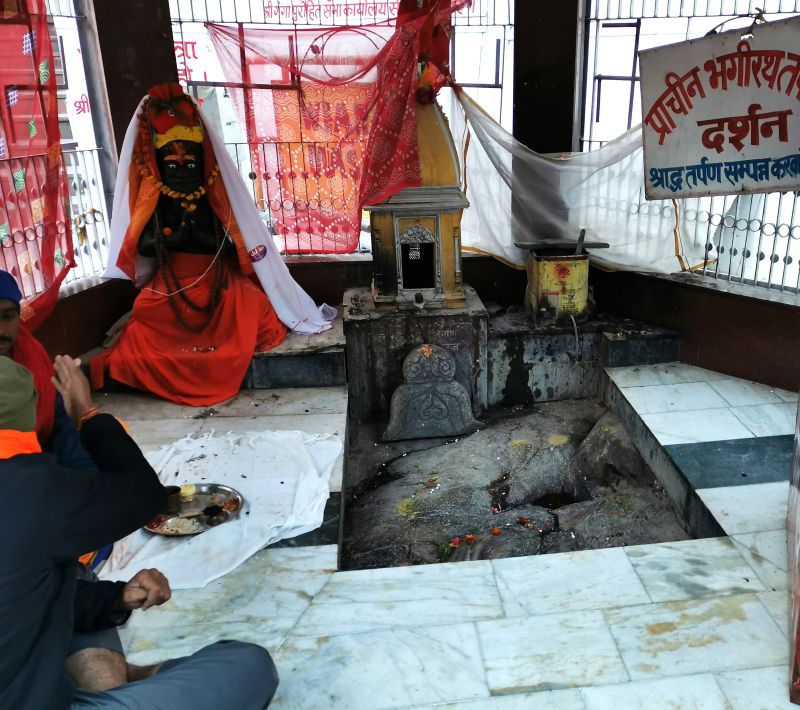
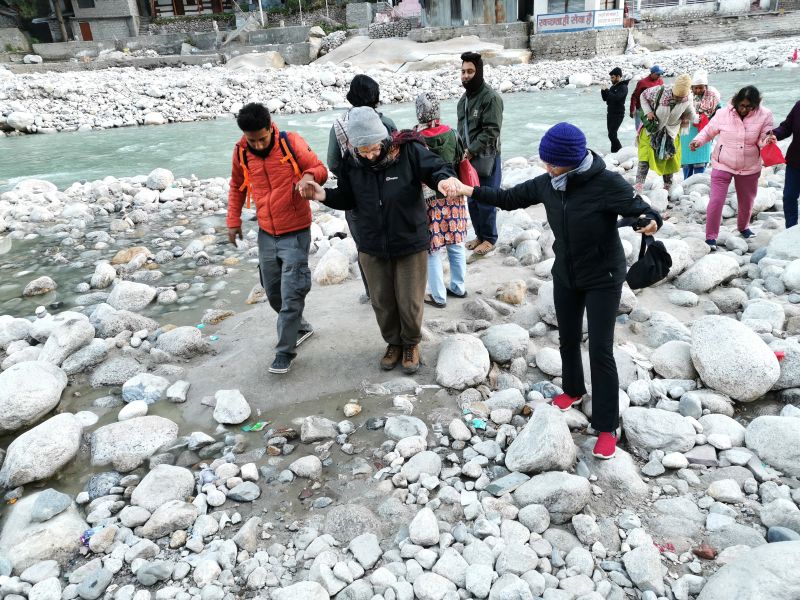
The Bhagirathi Shila rock in the small temple & down by the Bhagirathi River
We returned to the temple complex and made our way back down through the row of shops to our hotel.
I went to bed early with a developing cold while the rest of our party enjoyed dinner in the neighbouring cafe-restaurant.
Pandava Gufa
The following morning we packed up and after breakfast made our way across the bridge over the Bhagirathi River, along the route past the Surya Kund, and down the river towards the Pandava Gufa (Cave). The walk meanders through 1.5km (1m) of stunning forest of spruce and fir trees, the silence is palpable and I can only say that it was one of the most beautiful walks I have ever done.
(All you hear is the silence, the swish of my pants as I walk – the silence was profound)
I felt an elevated sense of a peaceful spiritual experience and it was like a pilgrimage in its own right.
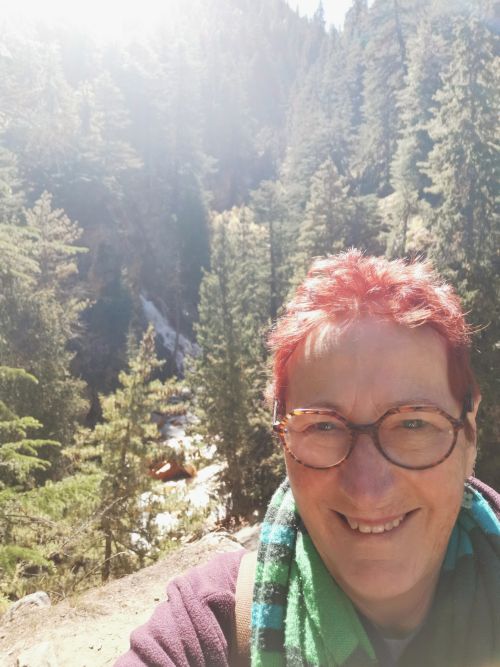
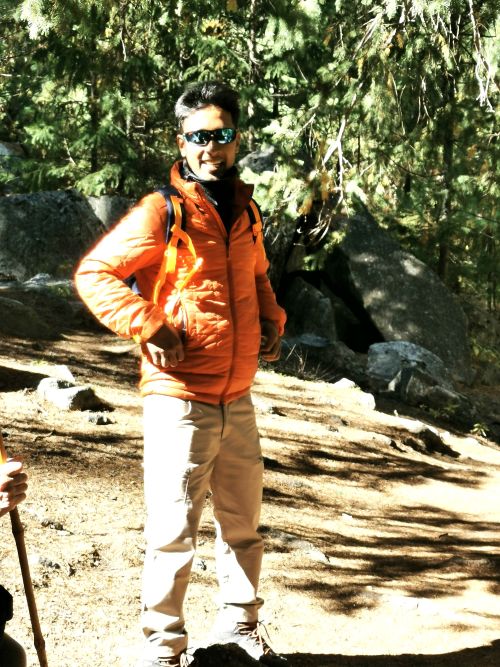

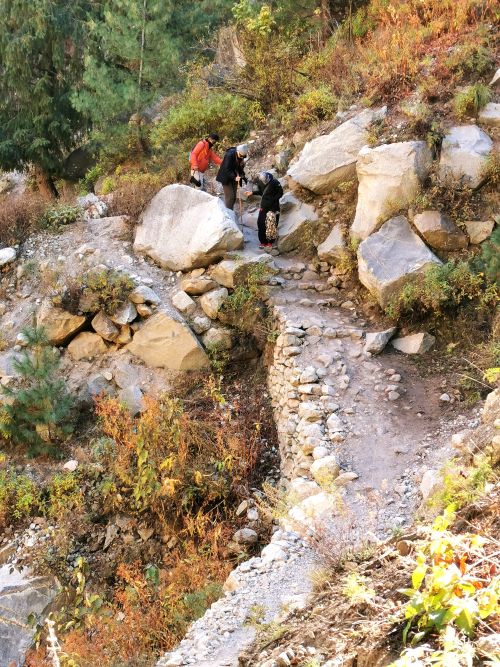

On the trail to the Pandava Gufa (Cave)
Don’t forget to click on the photos to see them in full size!
The cave itself is under a massive rock and it is said that the Pandavas lived in this cave on their way to Mt Kailash during the Mahabharata period of history. Many other saints, sages, and sadhus have lived in this cave over the centuries. In his book, ‘Swami Sundaranand, An Autobiography‘ Swami attempts to dispel some of the myths around this cave. However, myth or truth, this place is amazing and we enjoyed a delicious coffee in the smokey cave with the incumbents before coming back out into the light.
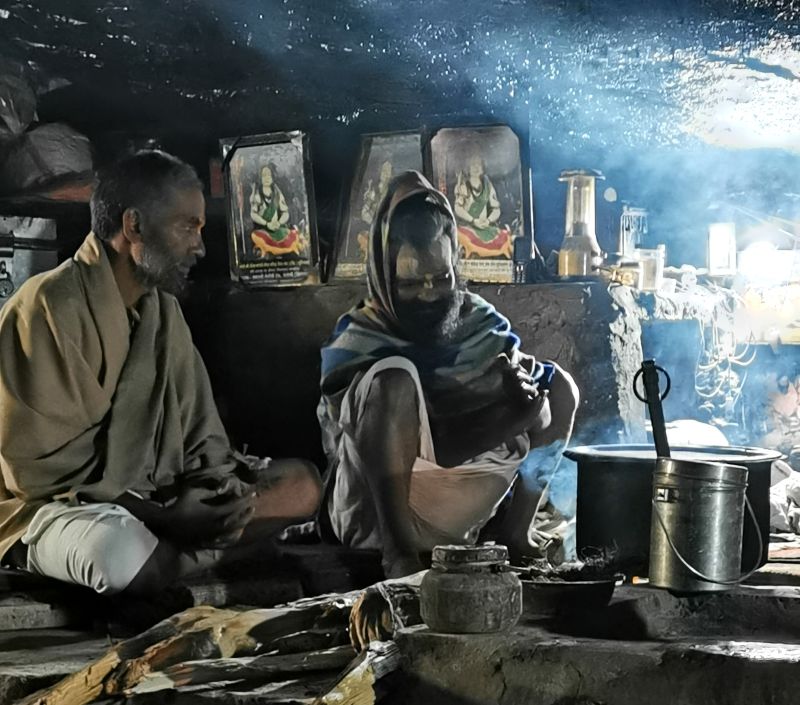
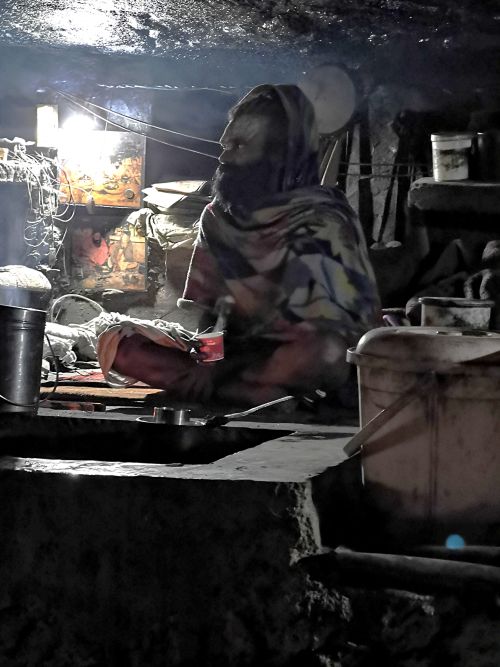
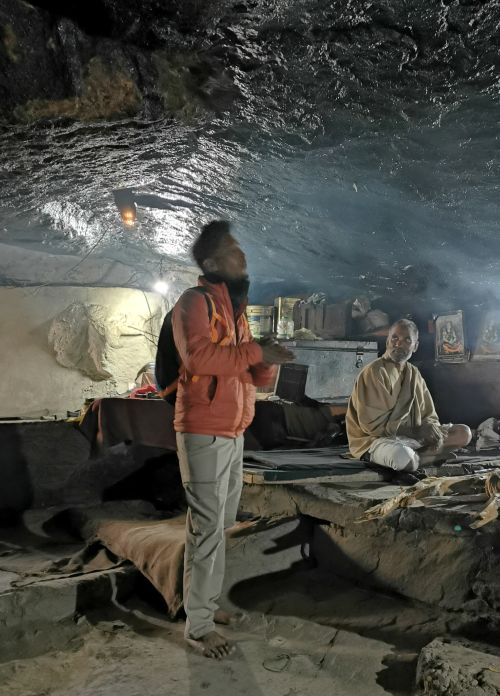
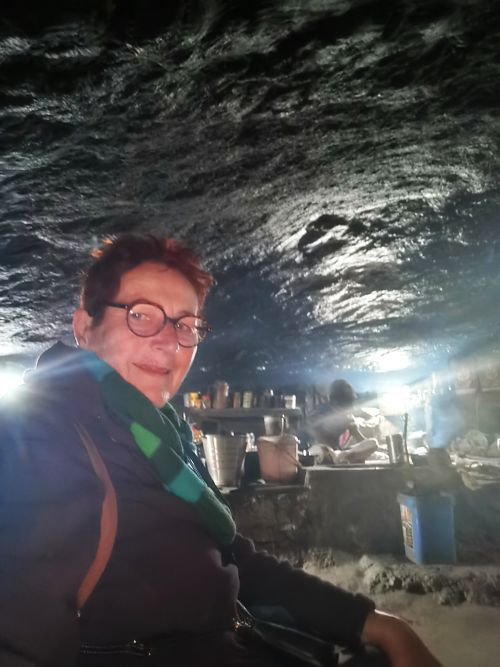
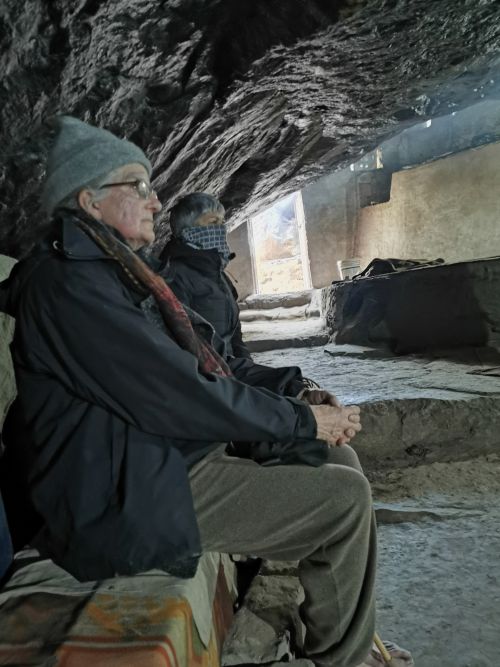
Inside the Pandava Gufa (Cave)
Surya Kund
We retraced our steps back to the village, pausing the Surya Kund to take in the atmosphere of the water rushing over the smooth rocks and the small waterfall, with mythological stories about Goddess Parvati who would bathe in the pond below the waterfall as a form of worship to the Sun God. In the pond there is also a submerged Shivlingam; this natural rock formation resembling a shivling remains partially submerged in the Bhagirathi River, but on this day was not visible at all due to being fully submerged.
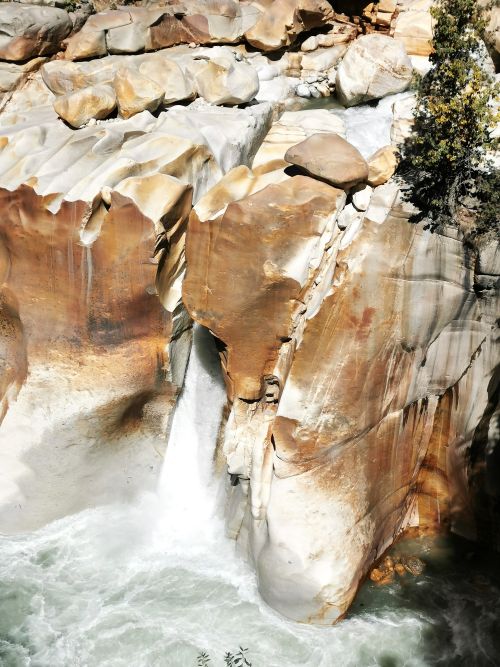
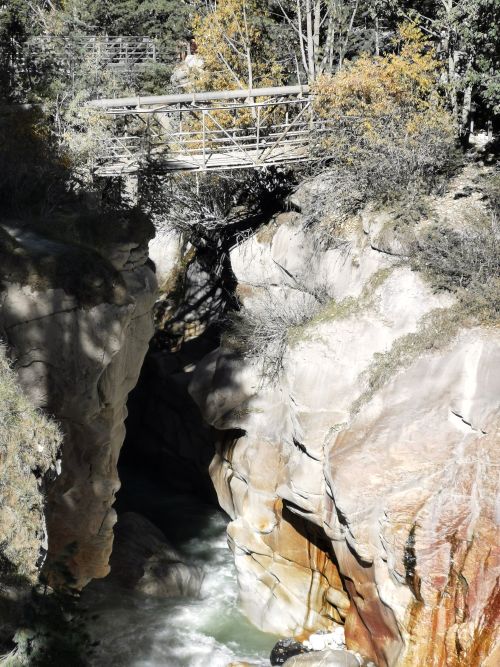
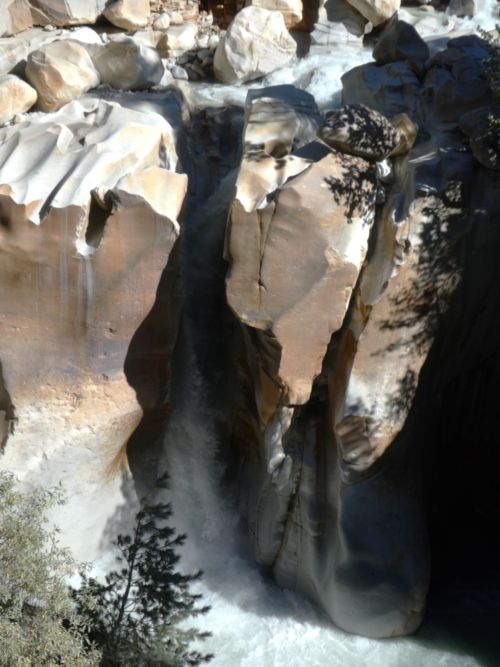
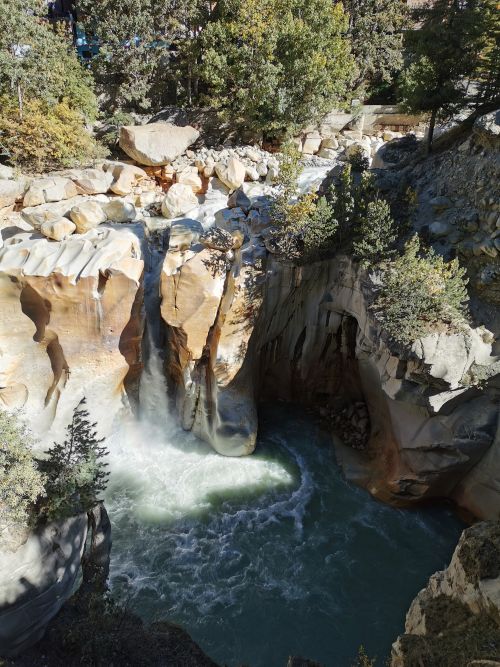
Surya Kund Gangotri
Don’t forget to click on the photos to see them in full size!
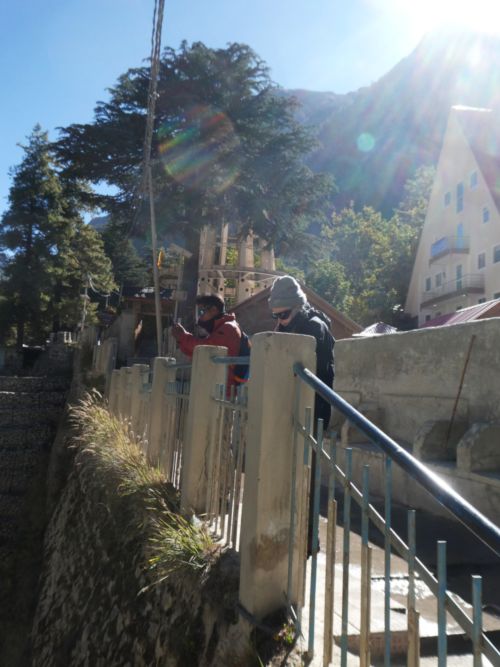
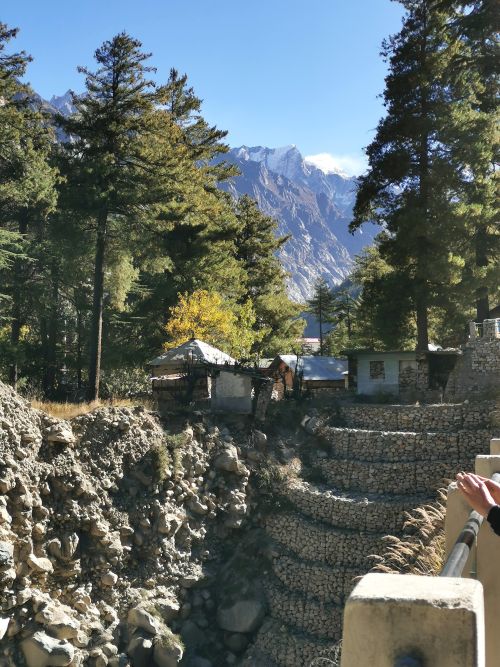
Kartik and Alice at Surya Kund & a terraced bank with the forest and mountains in the Gangotri complex area
Swami Sundaranand, Yogi, Mountaineer, & Photographer
From Surya Kund we walked the short distance to visit Sundaranand Swamy cottage, the home of the renowned mountaineer, photographer, and saint, who was the disciple and carer of Swami Tapovan Maharajji who it is said ‘exhibited a deep love of nature’ and wrote books on his wanderings in the Himalayas. He was born in Kerela in 1889 and died in 1957. When Swami Sundaranand, who was born in 1926 in the village of Ananthapuram near Nellore in the southeast of India, came to know Swami Tapovan they became a great duo, travelling frequently together into the high mountains beyond Gangotri. They lived simply, in summer very near Surya Kund and most winters in Uttarkashi. However, some winters were spent in the Himalayan mountain wilderness or at Gangotri.
They spent a great deal of time in deep meditation but during their trips to the mountains Swami Sundarananad took many photos. These are housed in an art gallery museum called ‘Tapovanam Hiranyagarba Art Gallery’ in Gangotri in the vicinity of the Tapovan Kuti (Swami Tapovan’s home).
https://swamisundaranand.com/about
The Art Gallery offers an amazing exhibition of Swamiji’s mountaineering days but unfortunately we could not stay for long. Almost the beginning of winter, we were in bare feet having removed our shoes at the entrance of the Gallery, and were unable to sustain walking on the cold floor for too long. Sadly, we felt we did not get to make the most of our visit to this 5 storied 12,0002ft, A-framed eco-friendly gallery and museum building. Check out the above link to enjoy more information on Swami Sundaranand and his Himalayan wanderings, the Art Gallery, and the ashram. Swami Sundaranand died at the age of 94 years on 23 December 2020 in Dehradun, India. There is much to be learned about and from this enlightened sage and I am pleased to have purchased one of his books which details his young life, brushes with death, and amazing feats in the Himalayas.
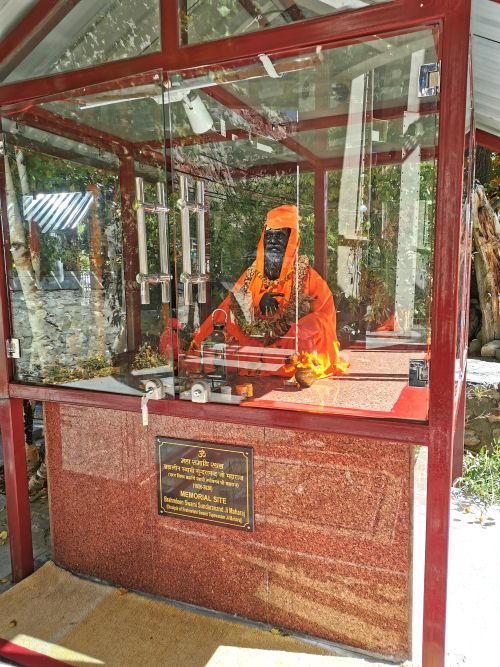
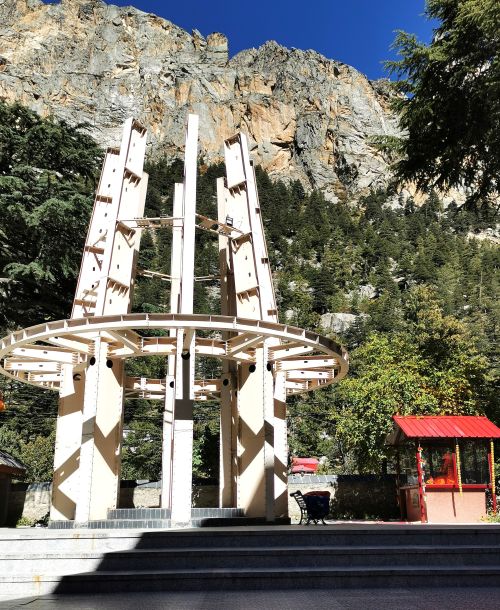
Swami Sundaranand Memorial Gangotri
We returned to the township across the river and visited the temple for the last time to enjoy the energy and ask for Goddess Ganga’s blessing for the remainder of our trip.
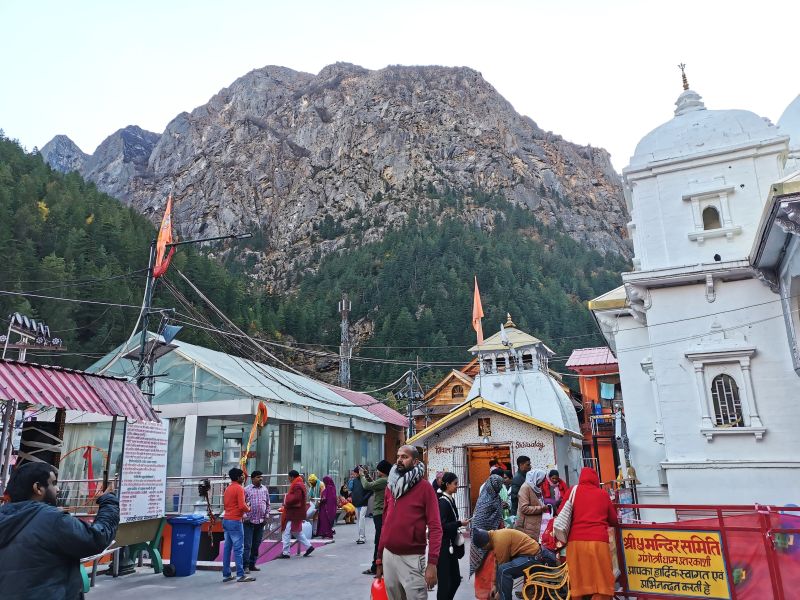
Our time here was short but wonderful as we bid farewell to the temple, Goddess Ganga, and the energy of this famous pilgrimage site, and headed back down the road towards Lanka Bridge and the mountain towns beyond where we would stay two nights, enjoy and explore.
Stay tuned for Part 3 and the exploration of mountain villages, and time and antics by Tehri lake, before heading back to Delhi and the end of this short Himalayan sojourn!

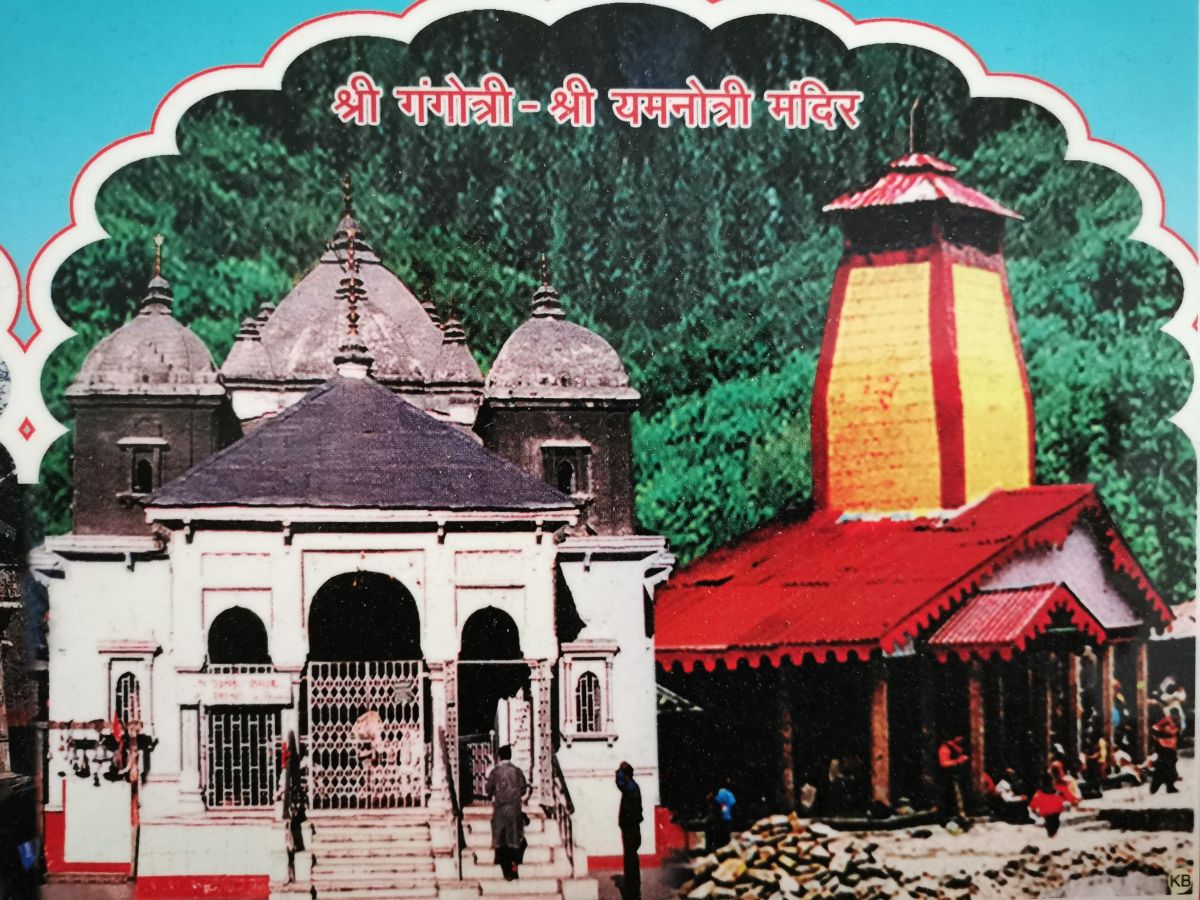
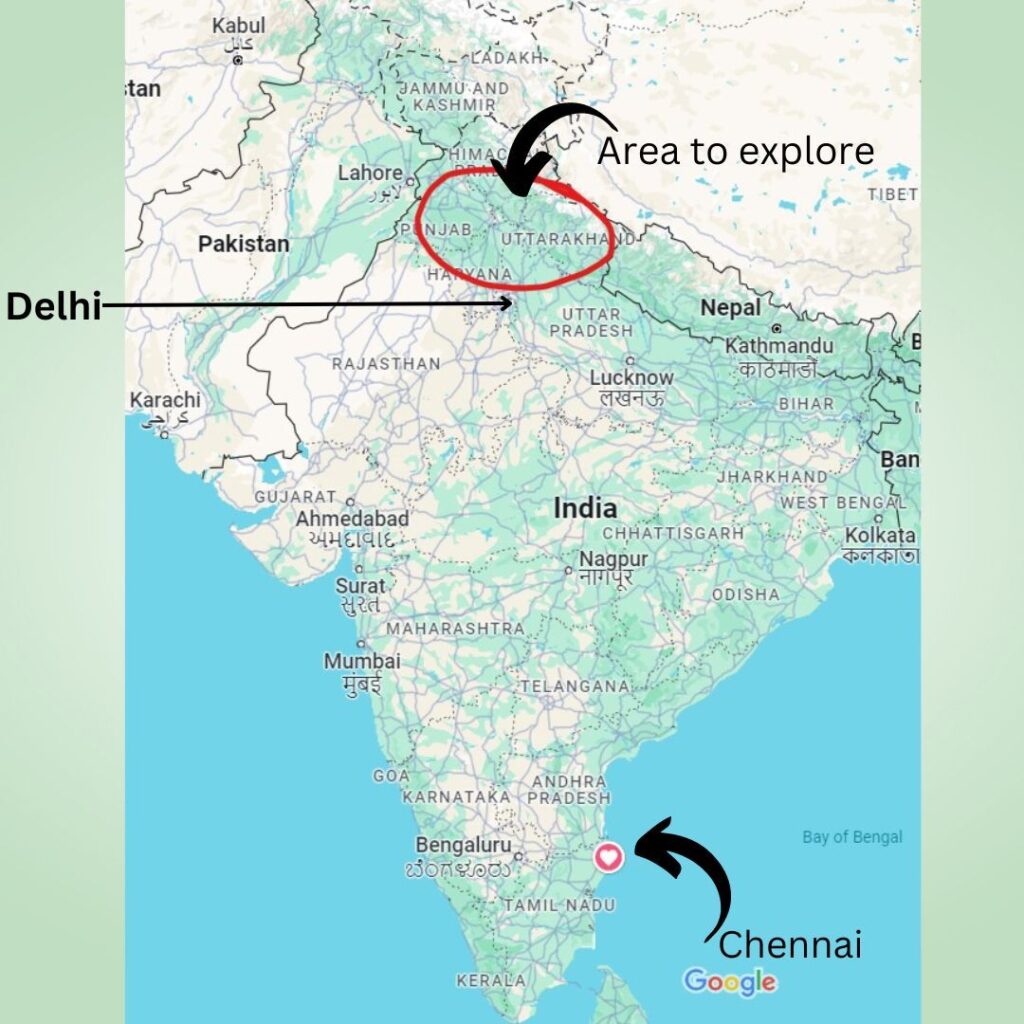
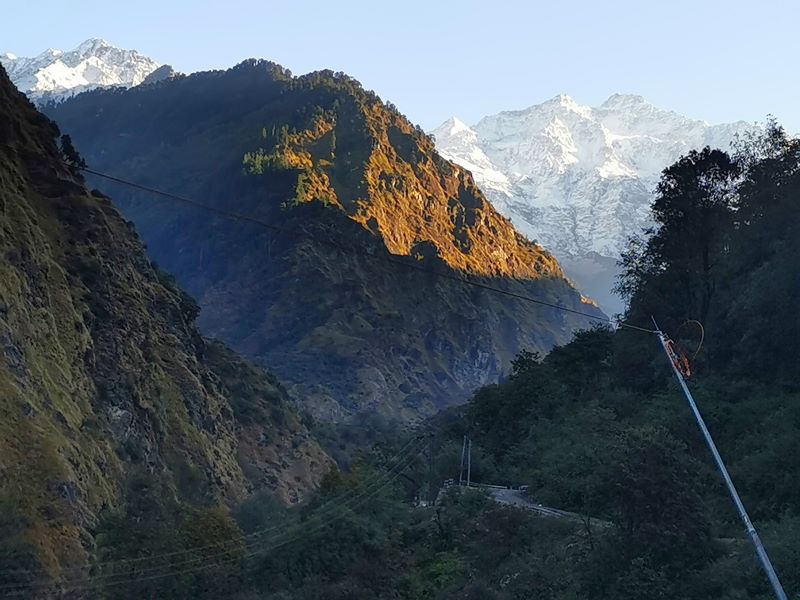


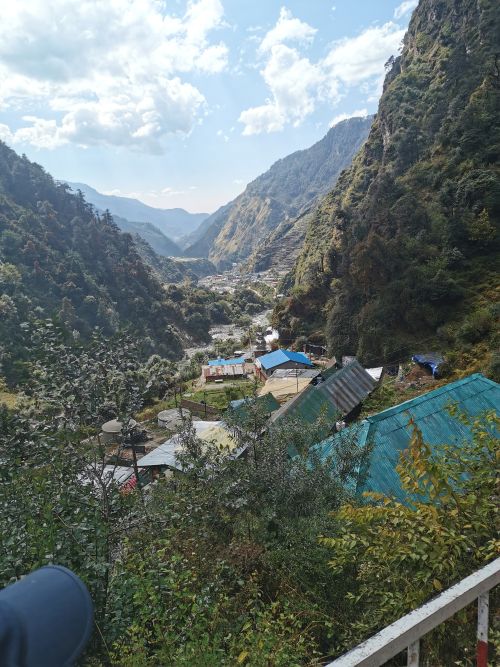
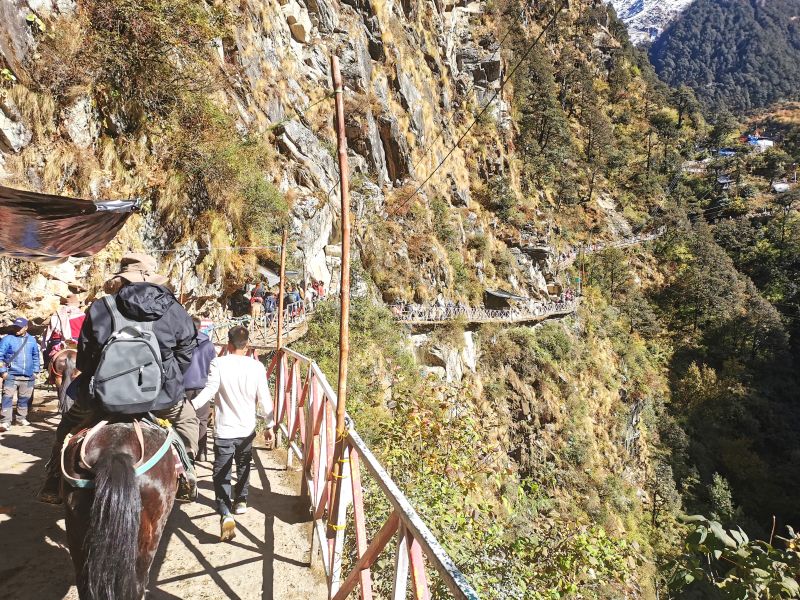
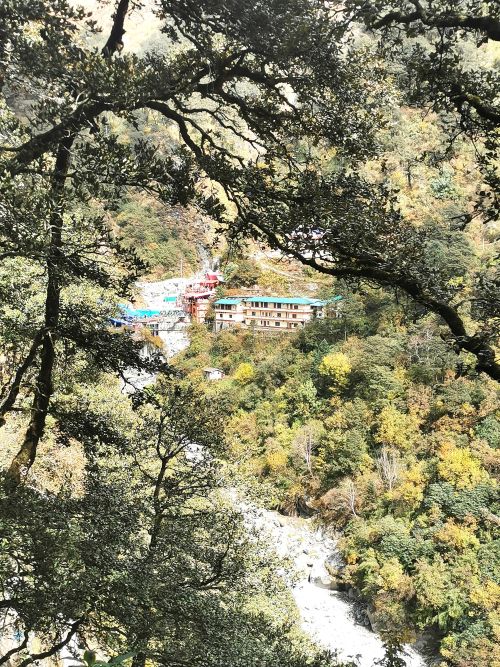
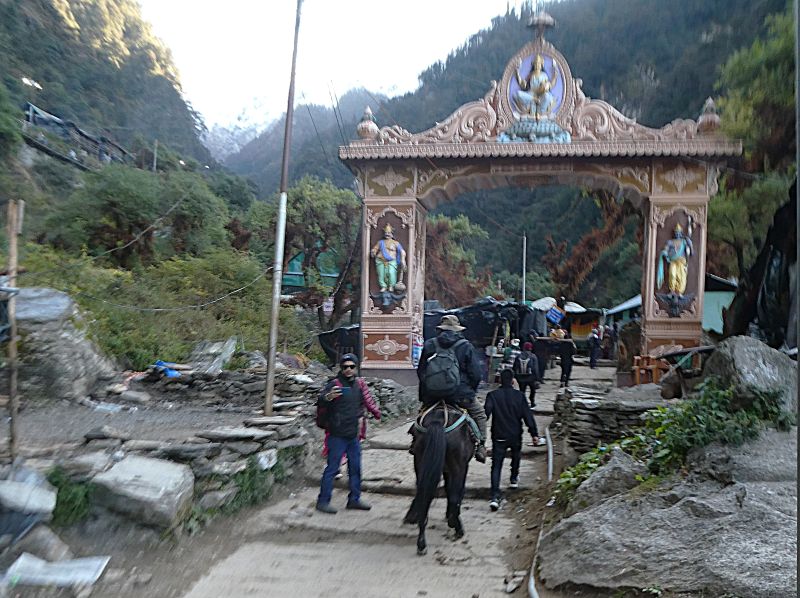
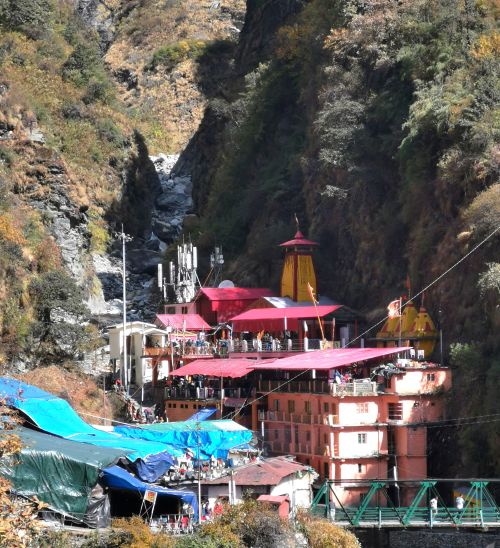
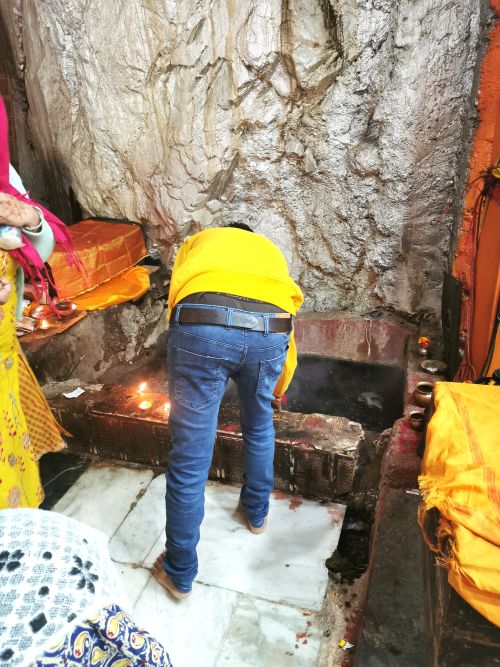


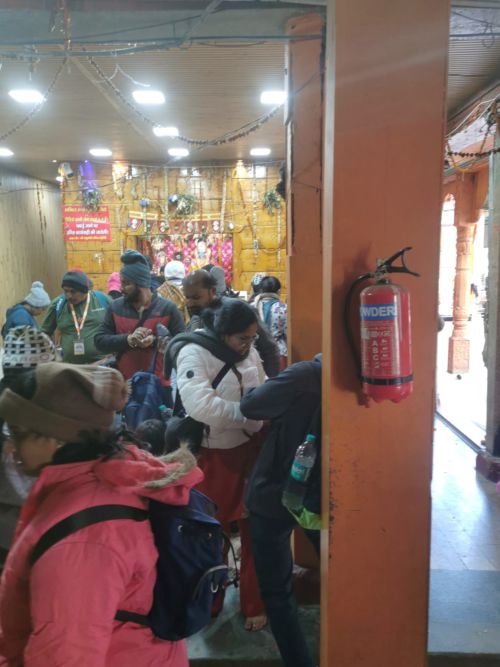
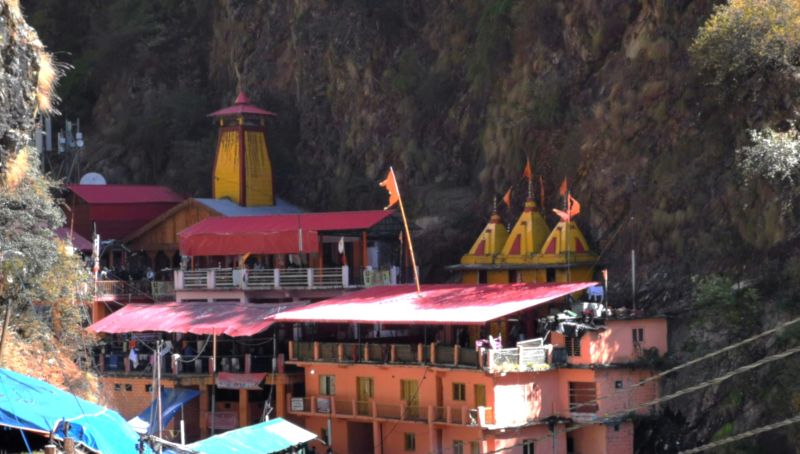
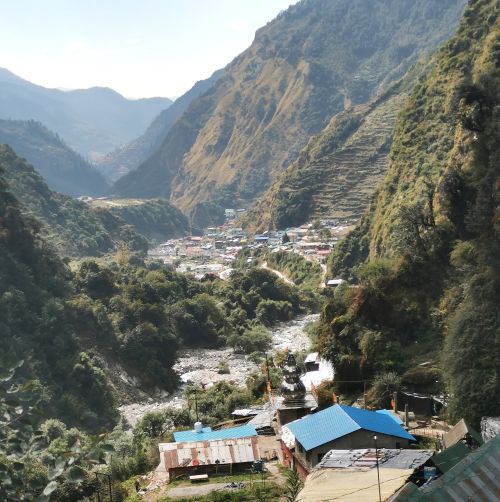
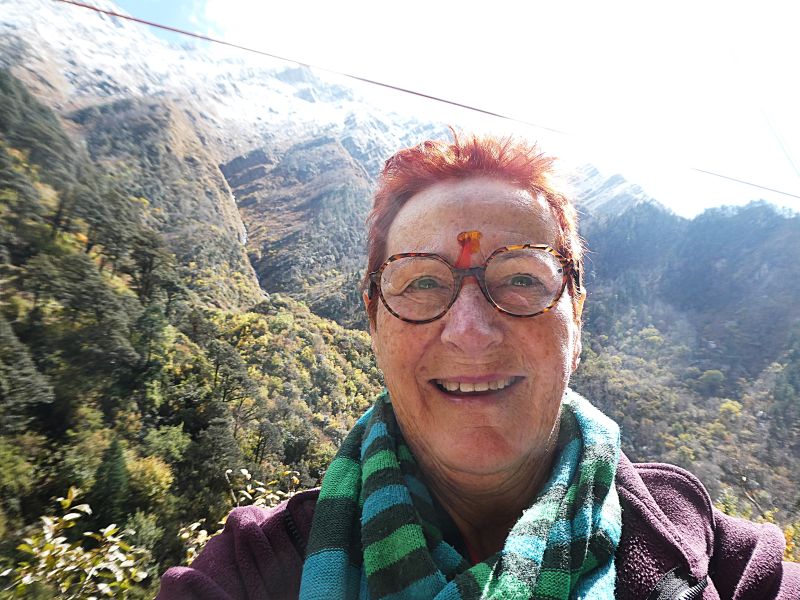
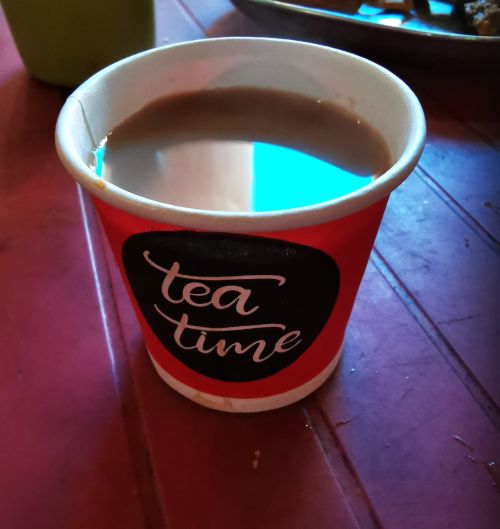
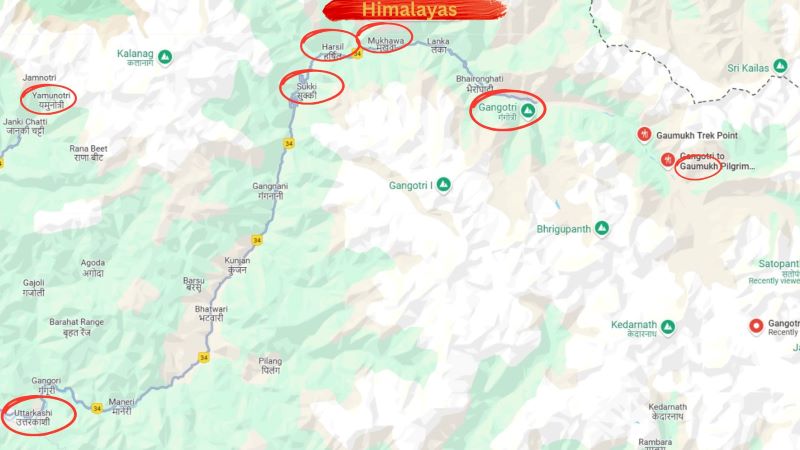

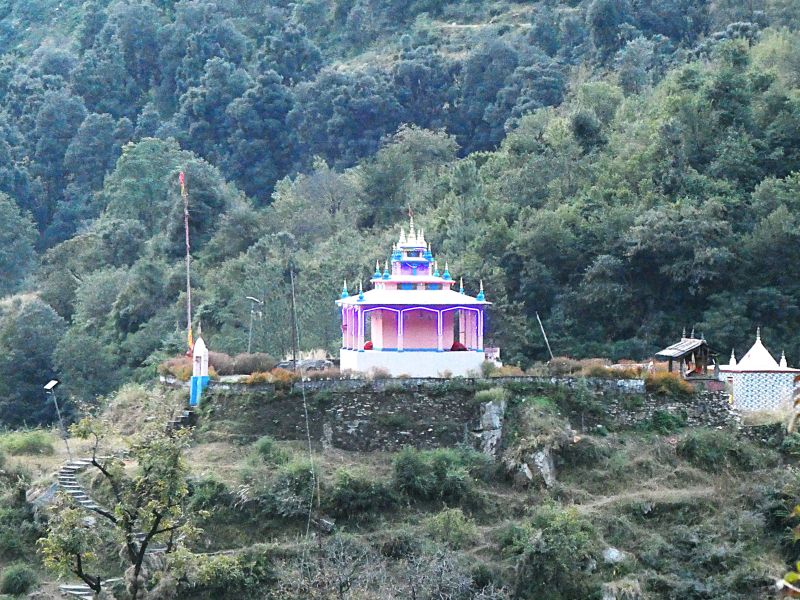
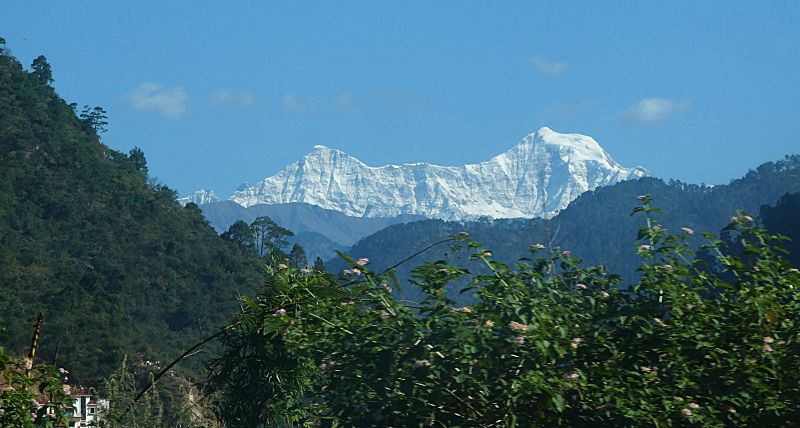
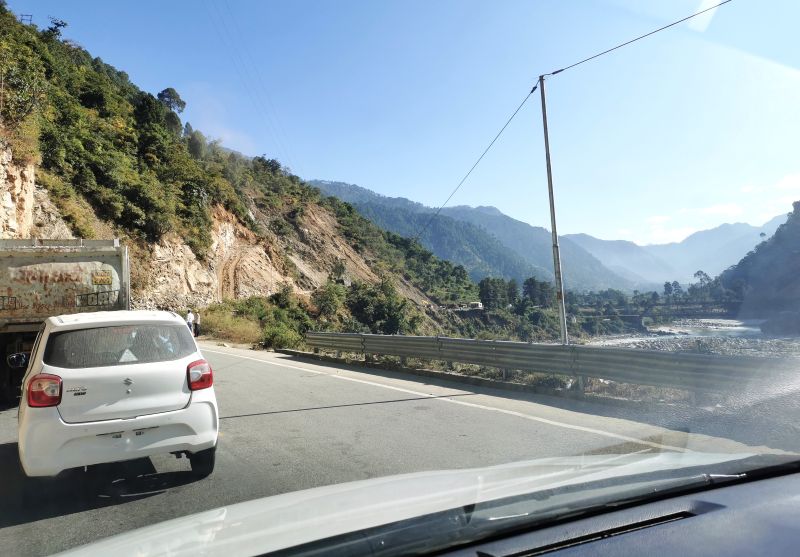
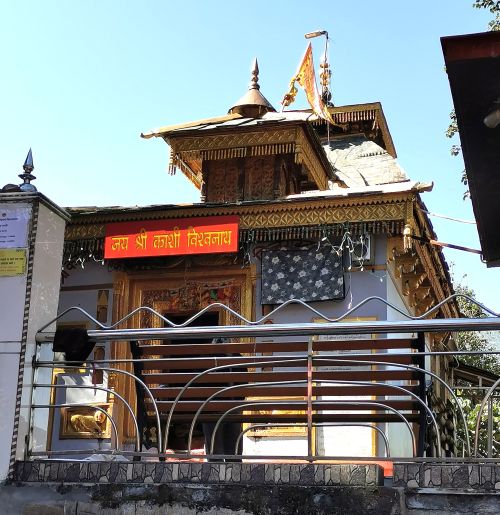
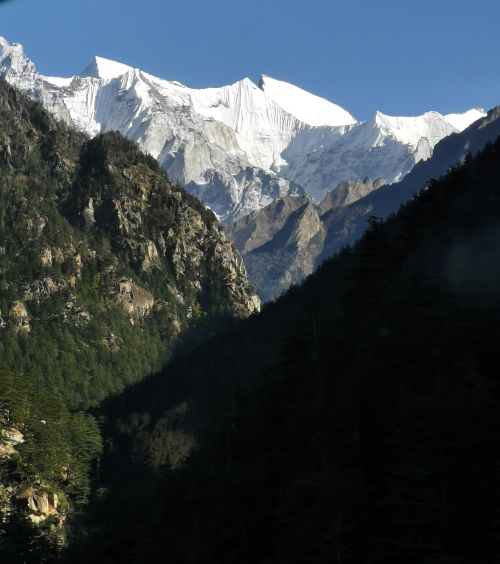
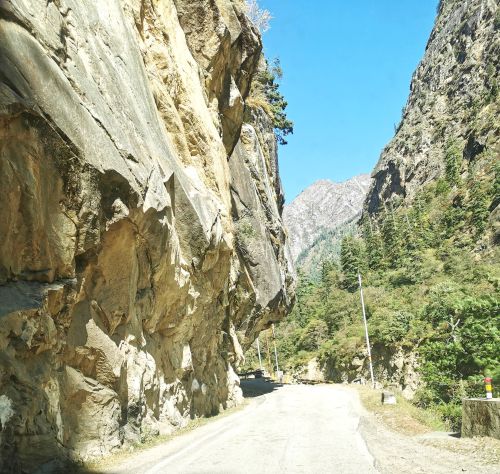
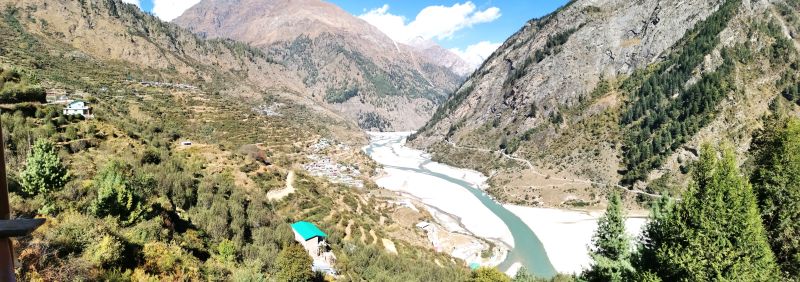
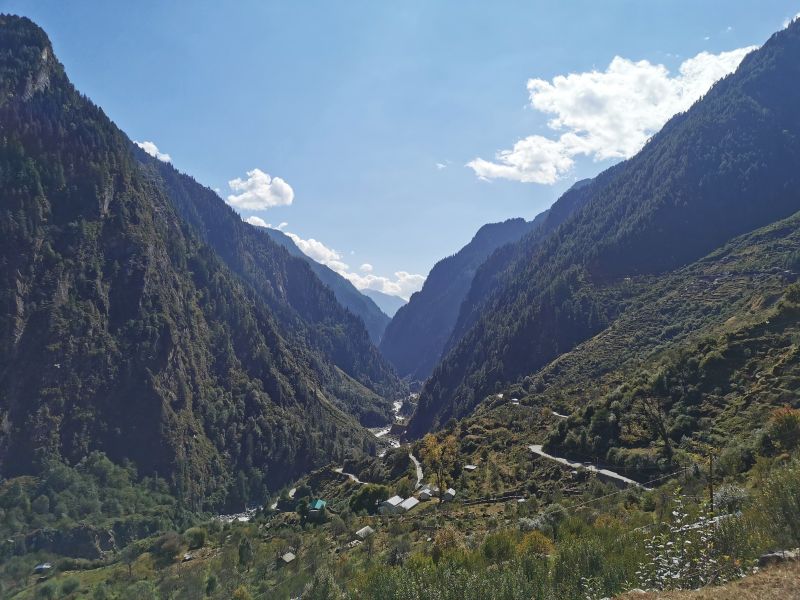
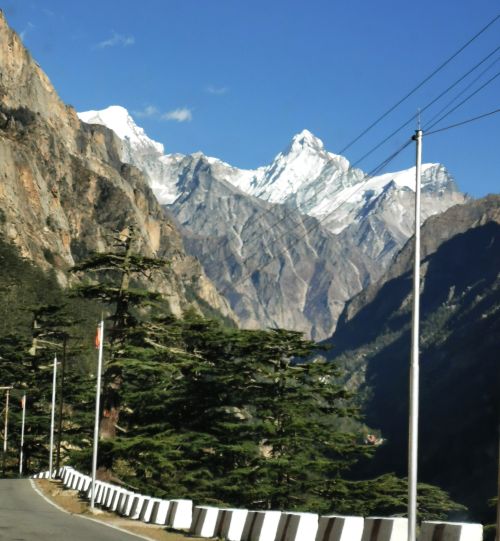
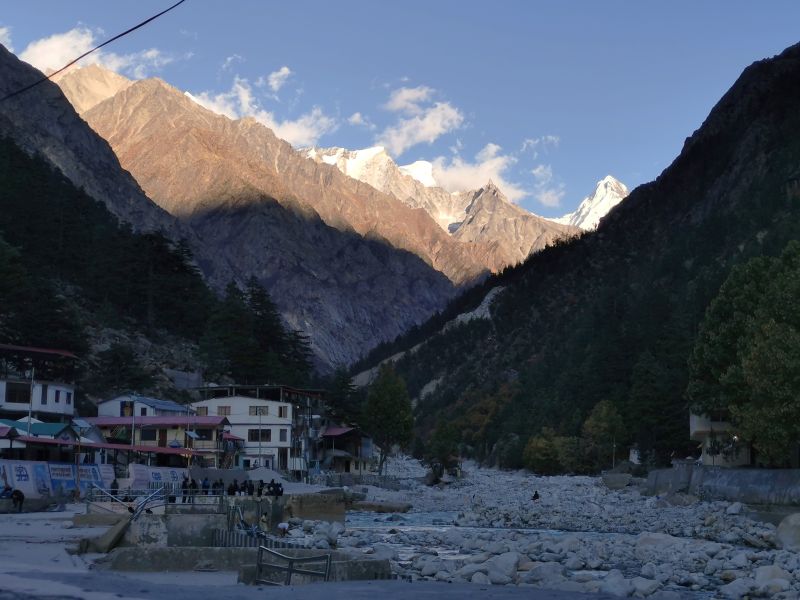
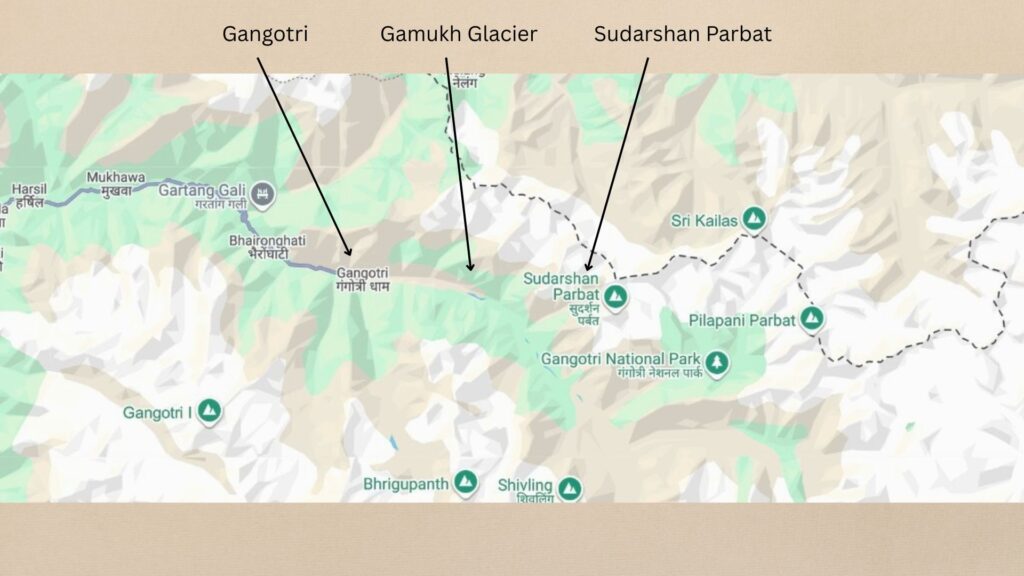
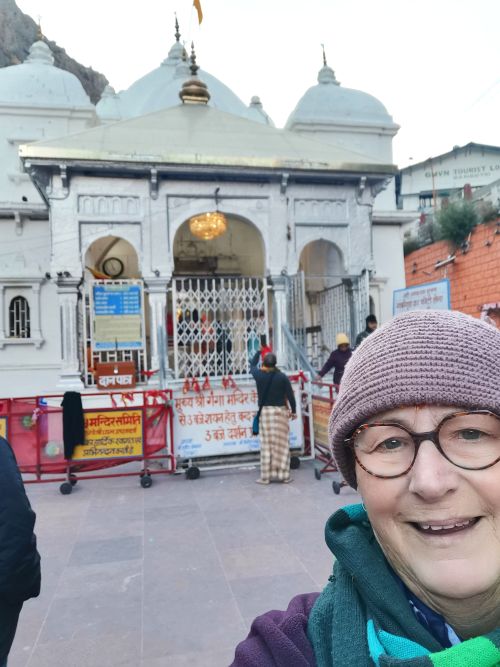
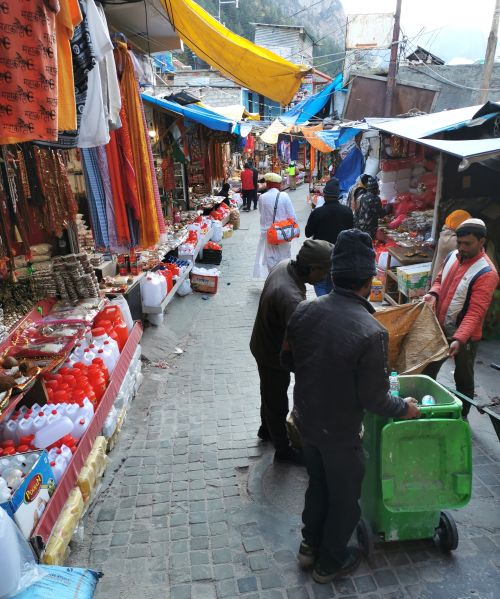

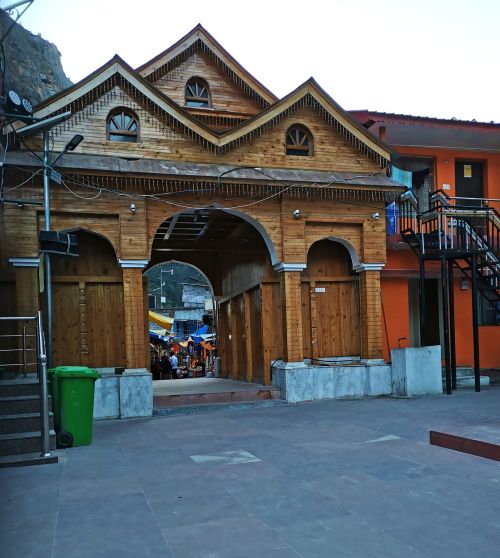

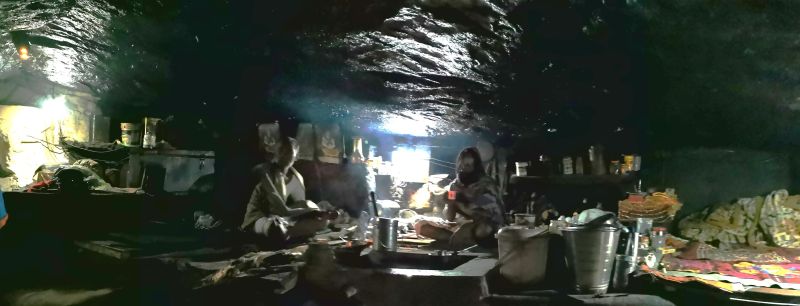
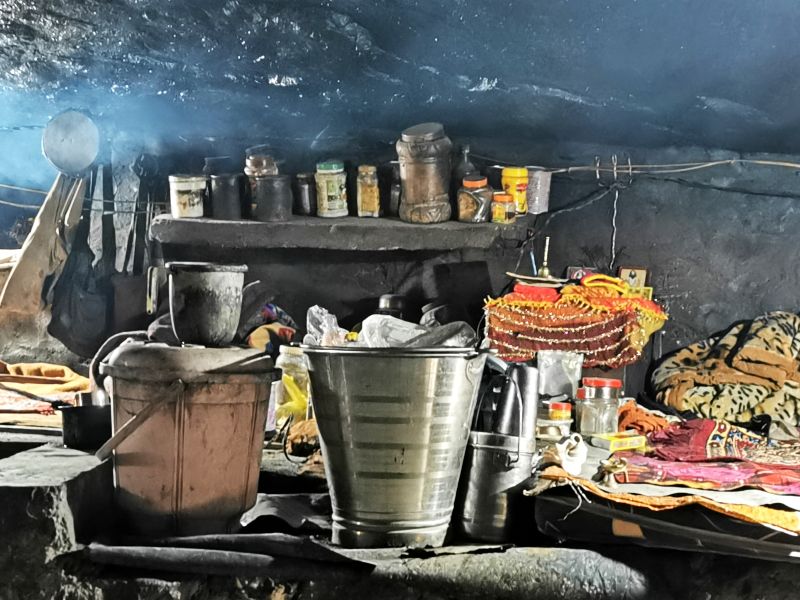

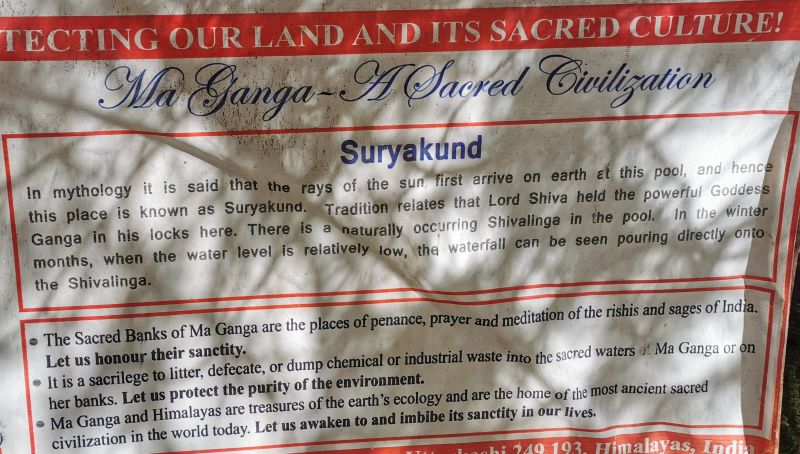


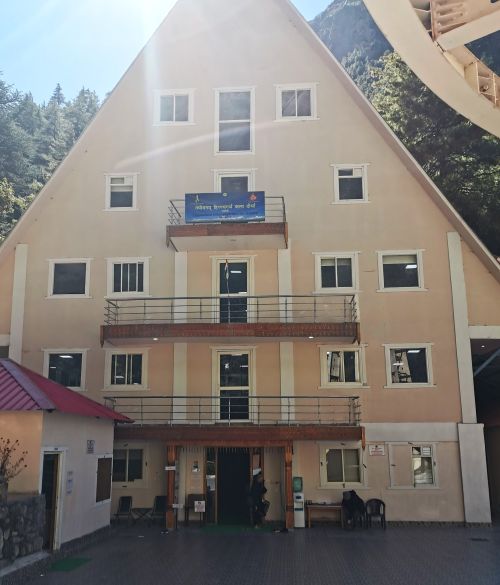

Journeys Through the World’s Beautiful Terrains n Corners
The challenging Himalayan foothills kissing Gongothri and Yemunothri offer a sacred path to inner peace and self-discovery.
Stunning photos and vivid descriptions expand our horizons and touch the heart.
Exceptional teamwork in storytelling brings real-life adventures to reader’s life.
Thankyou Maheshji, you are a true poet!! Your words are inspiring!
Thankyou – from Teresa and Shoba!